Historically, Takayama was an important and prosperous merchant town, known for its carpenters, craftsmen, and artisans. Much of that era has been preserved, making it one of the few cities in the country where you can enjoy its momentous past.
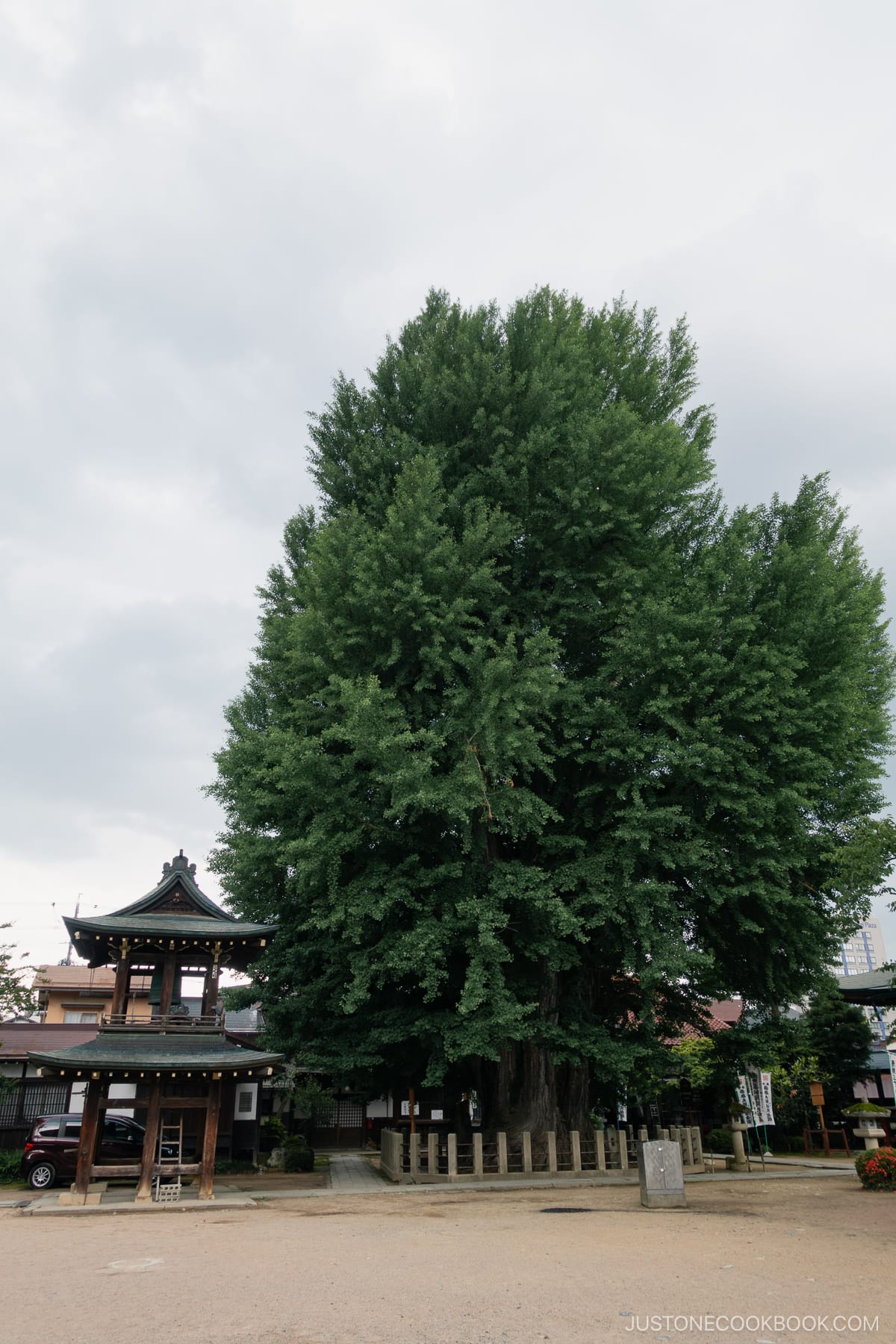
For part two of our four-part trip to Takayama series, we’ll take you to some of the must-visit attractions and historic sites, including Takayama Jinja, Jinya Asaichi, Takayama City Archives Museum, the historic district of Sanmanchi, and more! These spots are all within a short stroll of each other, except for the last one, Kokubun-ji.
Table of Contents
- Historical Buildings of Takayama
- Takayama Jinya 高山陣屋: A Glimpse into History
- Takayama Jinya Asaichi 高山陣屋朝市: A Taste of Tradition
- Takayama City Archives Museum 高山市政記念館: Unveiling the Past
- Takayama Sanmachi Suji/Kami Sannomachi 三町: Walking through History
- Takayama Museum of History and Art 飛騨高山まちの博物館: A Step Back in Time
- Hida Kokubun-ji Temple 飛騨国分寺
- Hida Folk Village
- Takayama Showa-Kan Museum
- Views of Takayama
Historical Buildings of Takayama
Takayama is known for its well-preserved buildings and the craftsmanship that is part of the town’s identity. Here are our favorite historical buildings from our visit to Takayama.
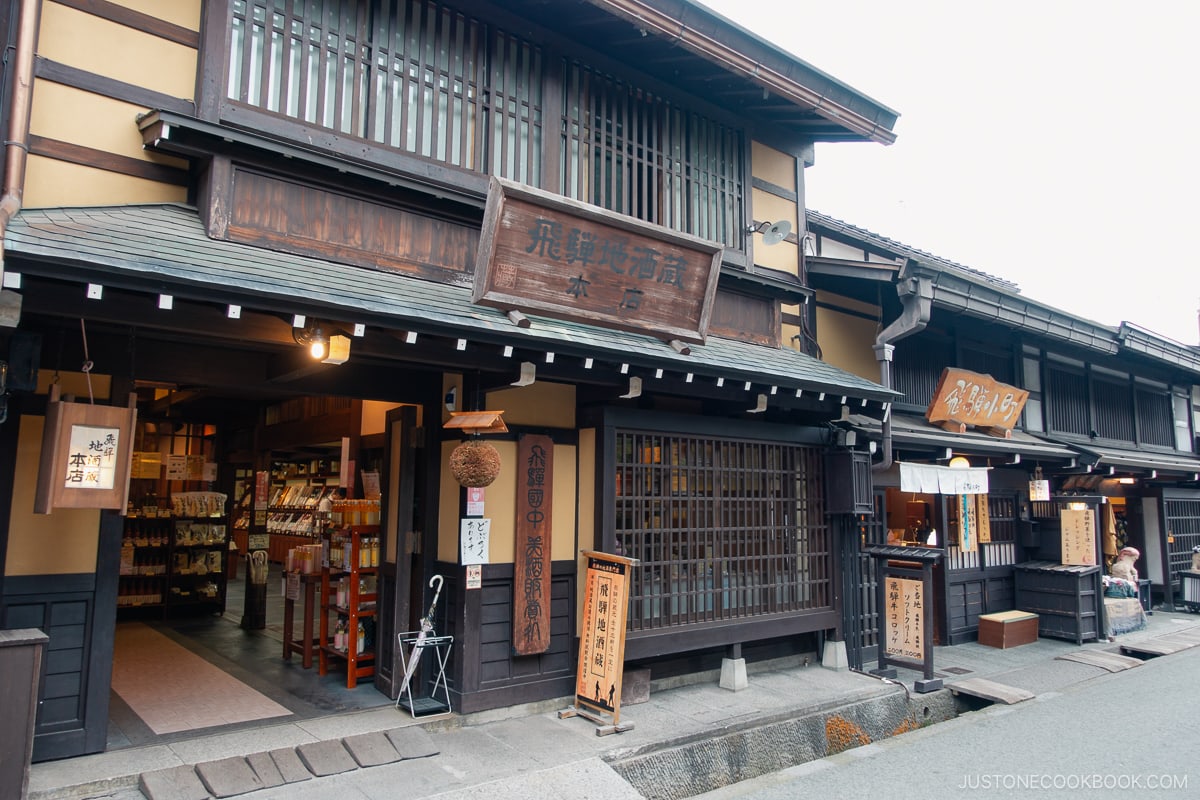
Takayama Jinya 高山陣屋: A Glimpse into History
Takayama Jinya’s history dates back to 1692 when it functioned as a branch office of the Edo Bakufu (Shogunate) during the reign of the Tokugawa Shoguns. During the Tokugawa Shogun’s rule, there were roughly 60 of these administrative areas, which the Bakufu governed directly, while the rest were ruled by feudal lords.
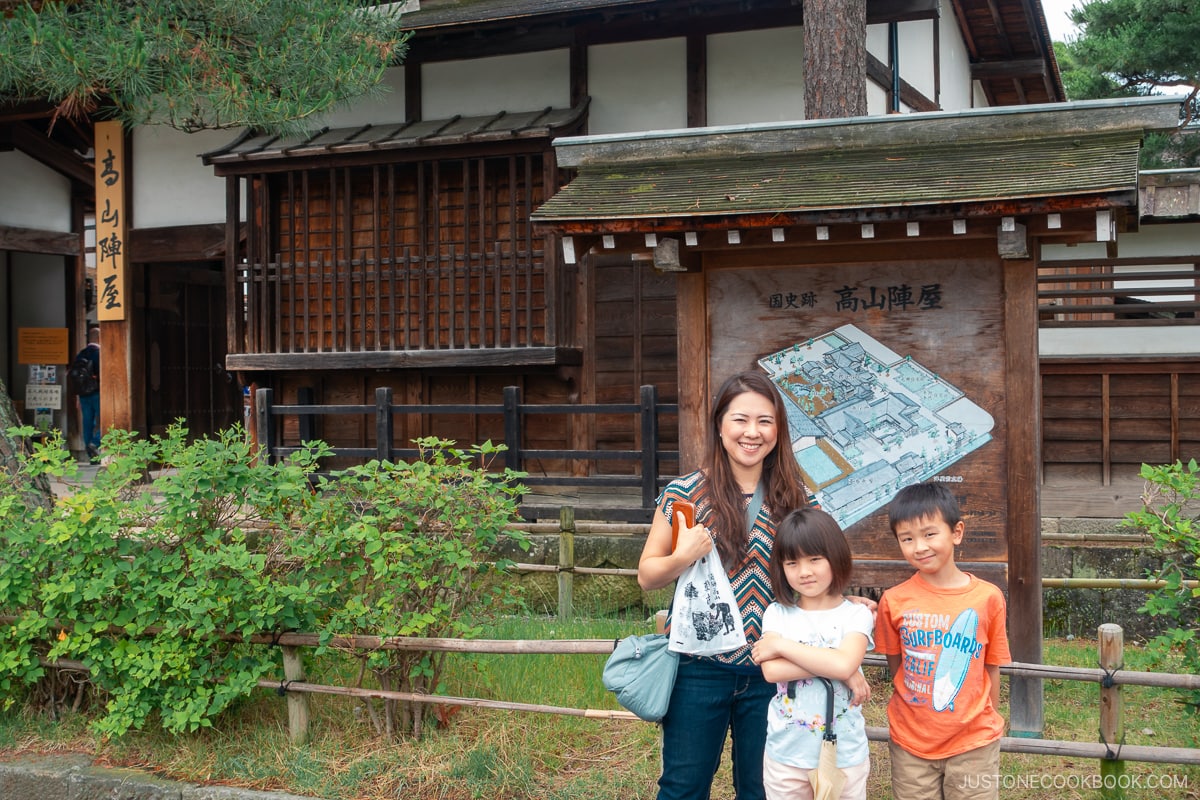
Of all the Bafuku, Takayama Jinya is the only one still standing today. It played a pivotal role in conducting government affairs, such as tax collections, police, and financial matters.
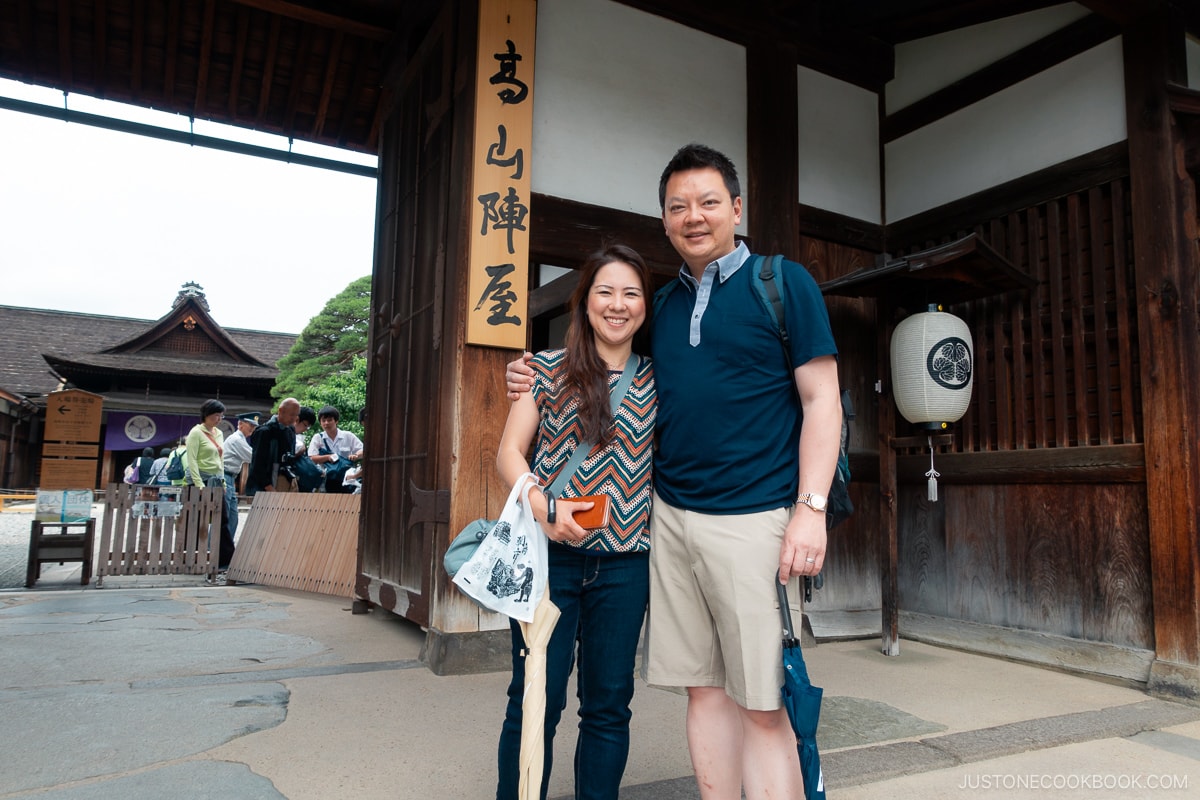
After 1867, when Japan returned to imperial rule, the building became the prefecture’s government office. The office and grand hall were constructed in the early 1800s, while the rice storehouse at the back dates back to the 1600s.
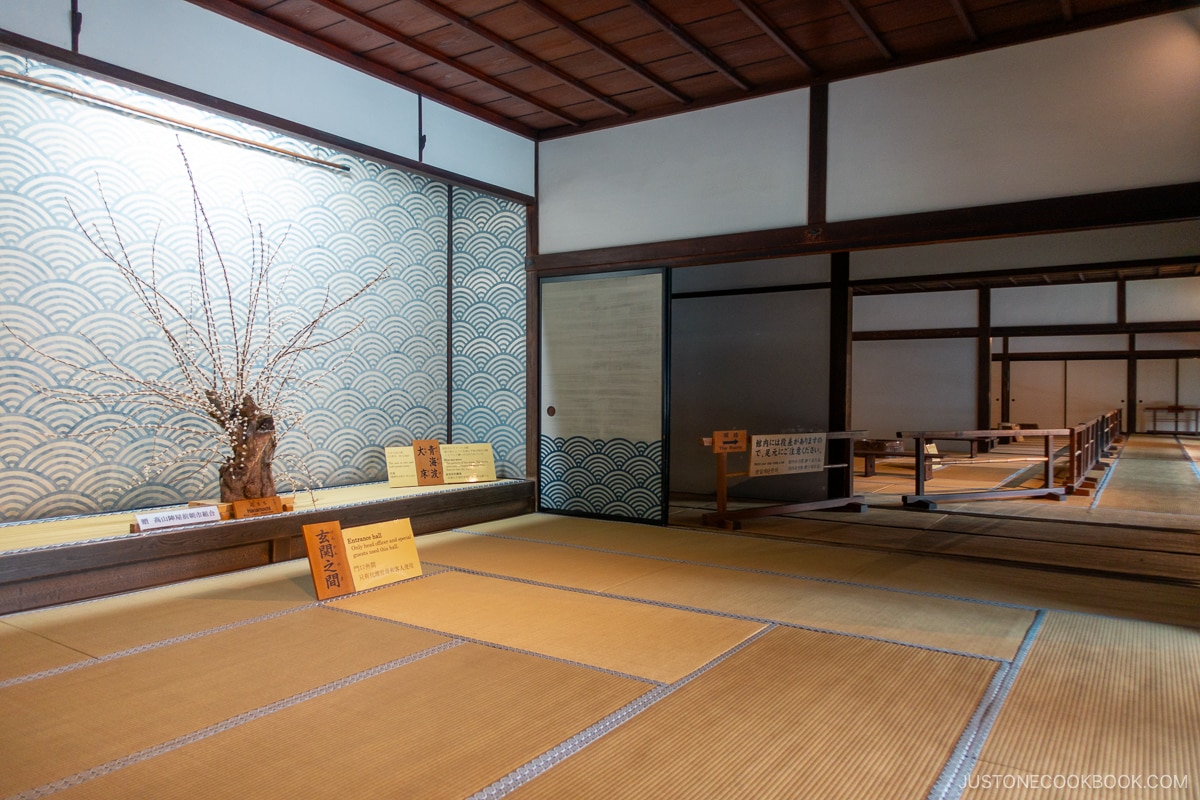
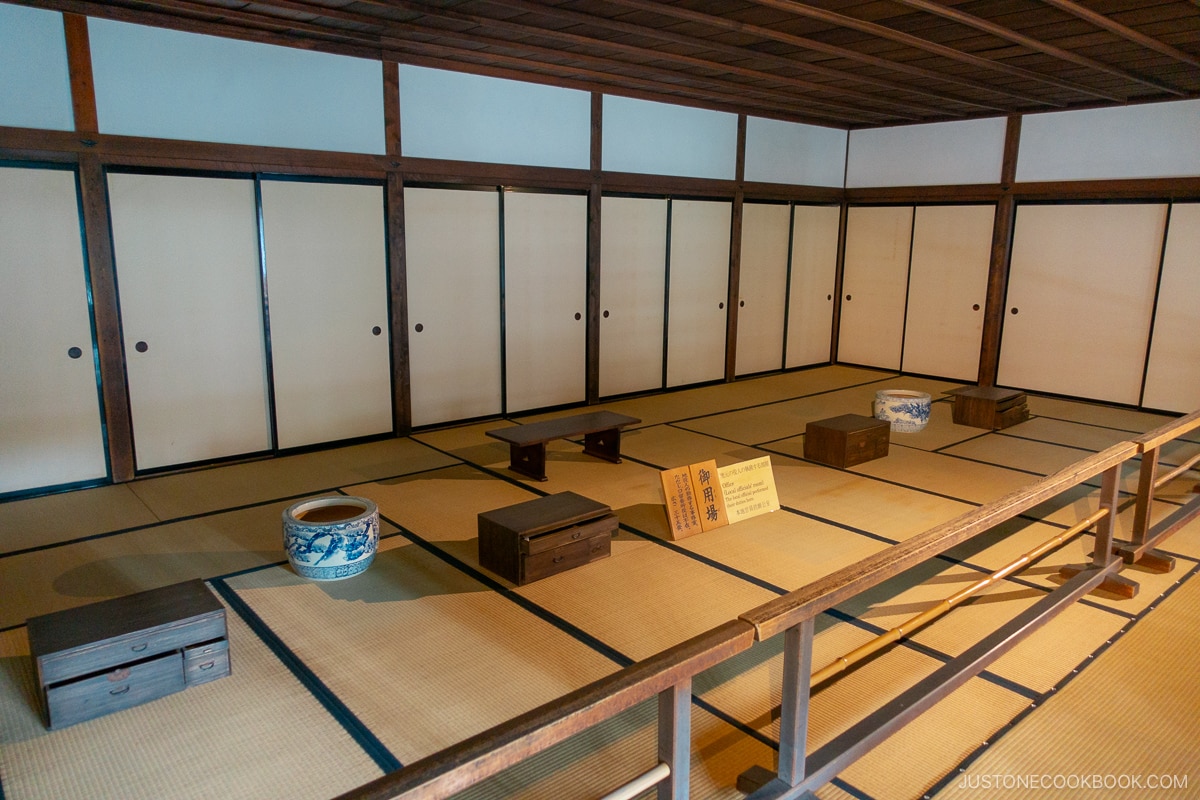
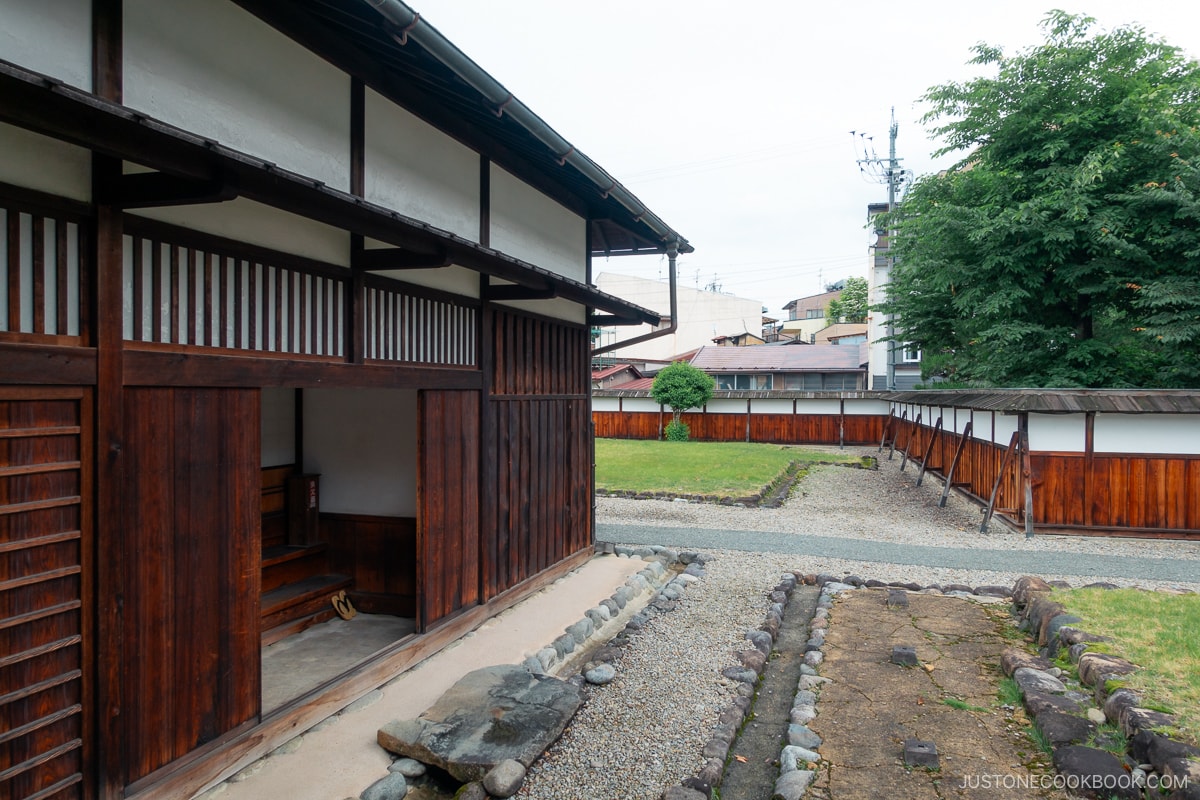
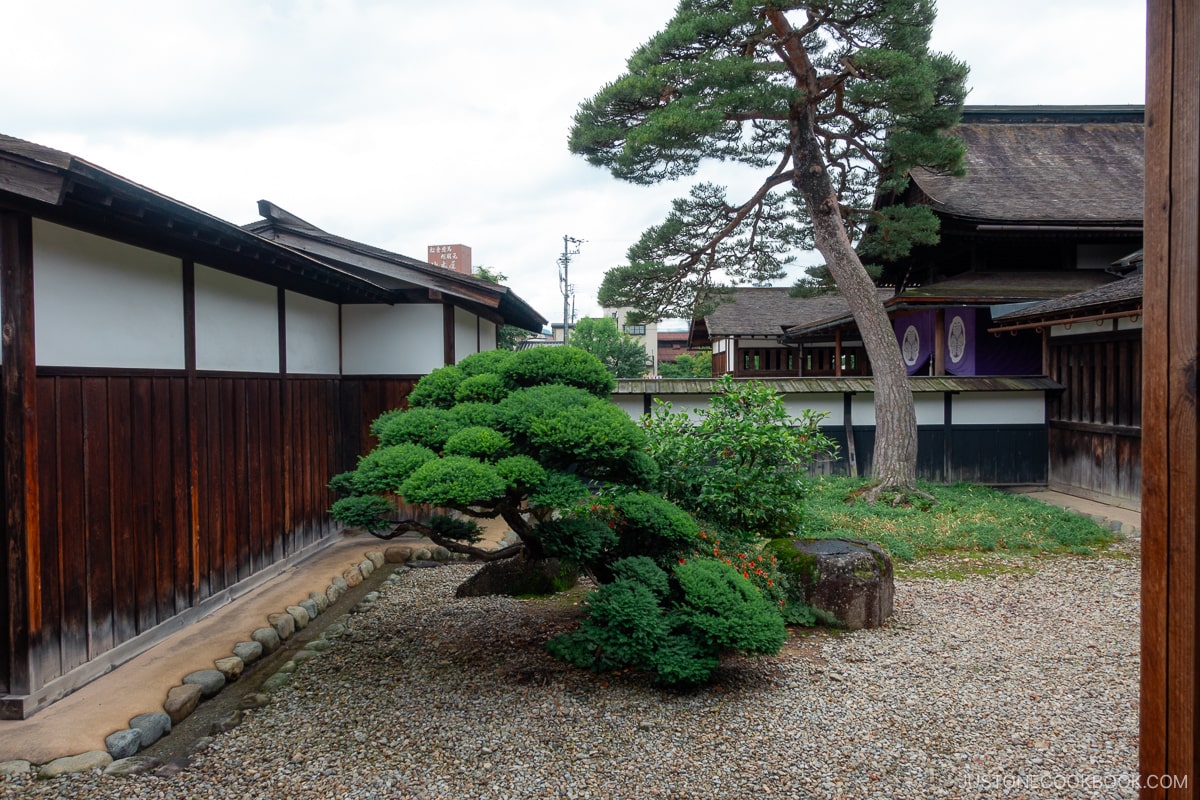
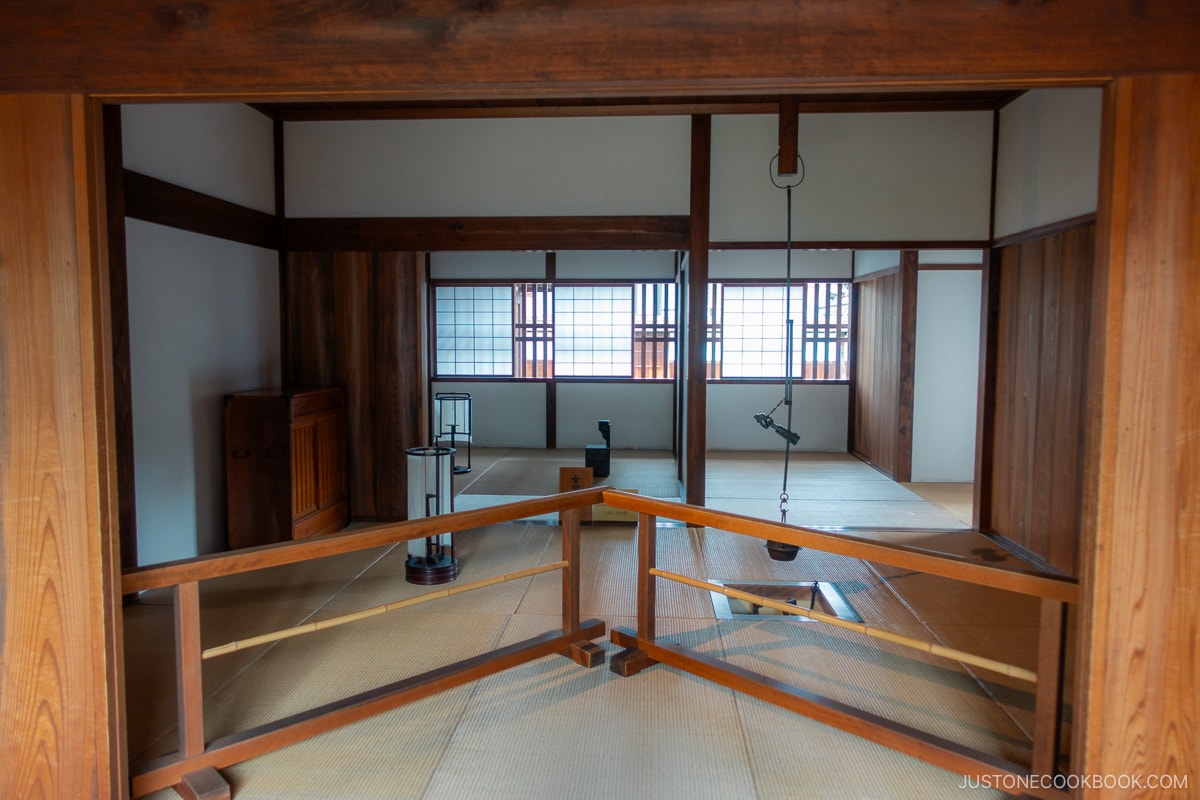
Takayama Jinya is quite large with almost 30 rooms for visitors to explore, and you can easily spend 45-60 minutes there.
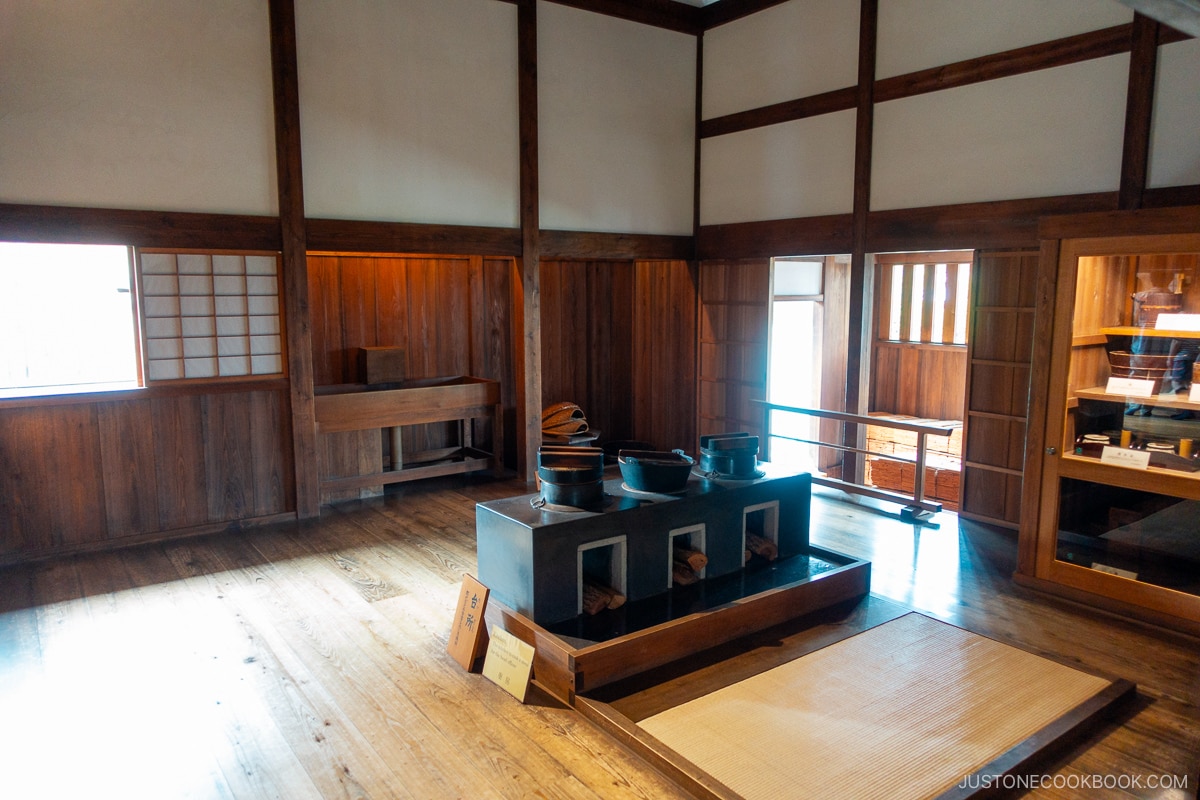
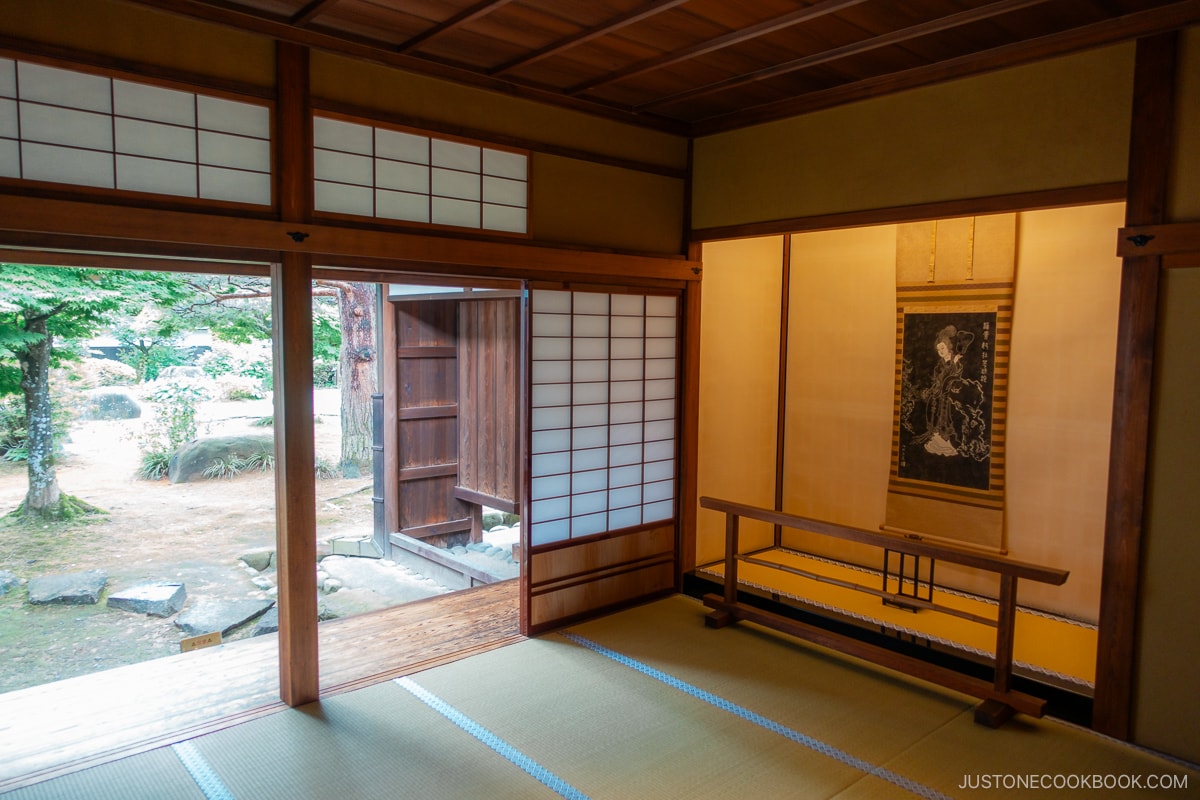
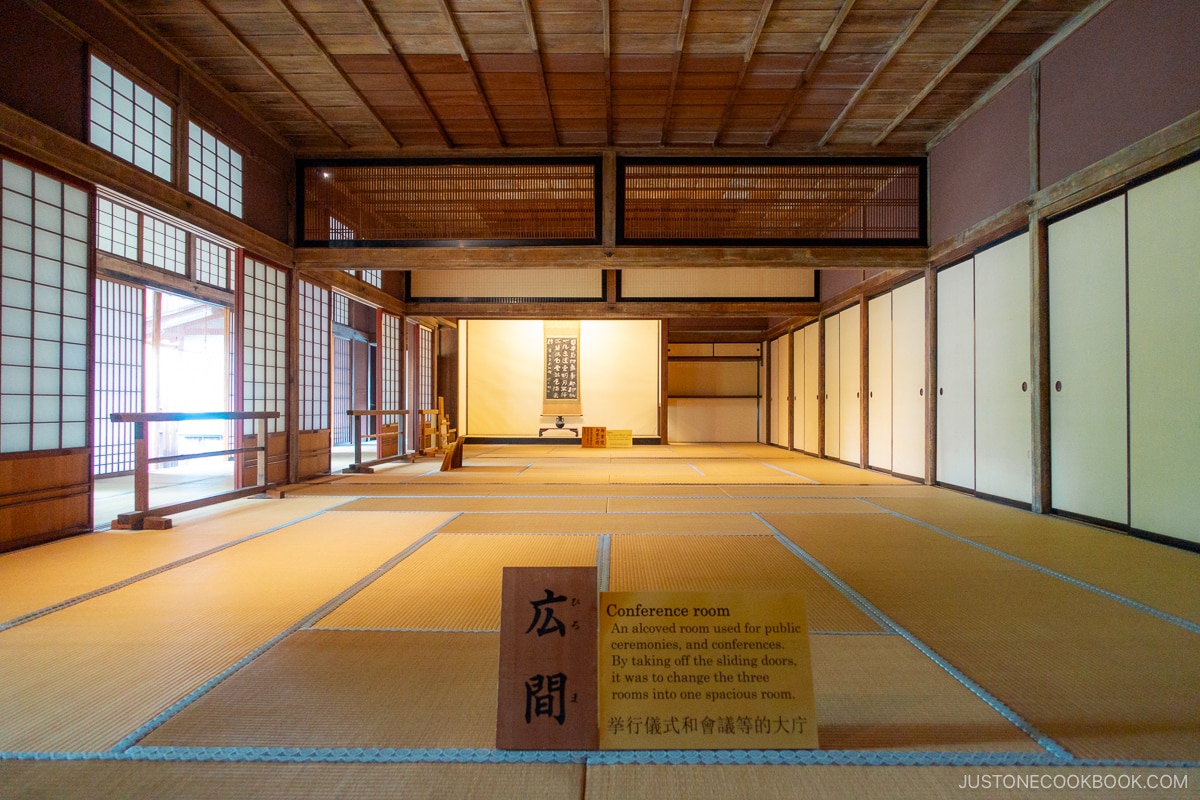
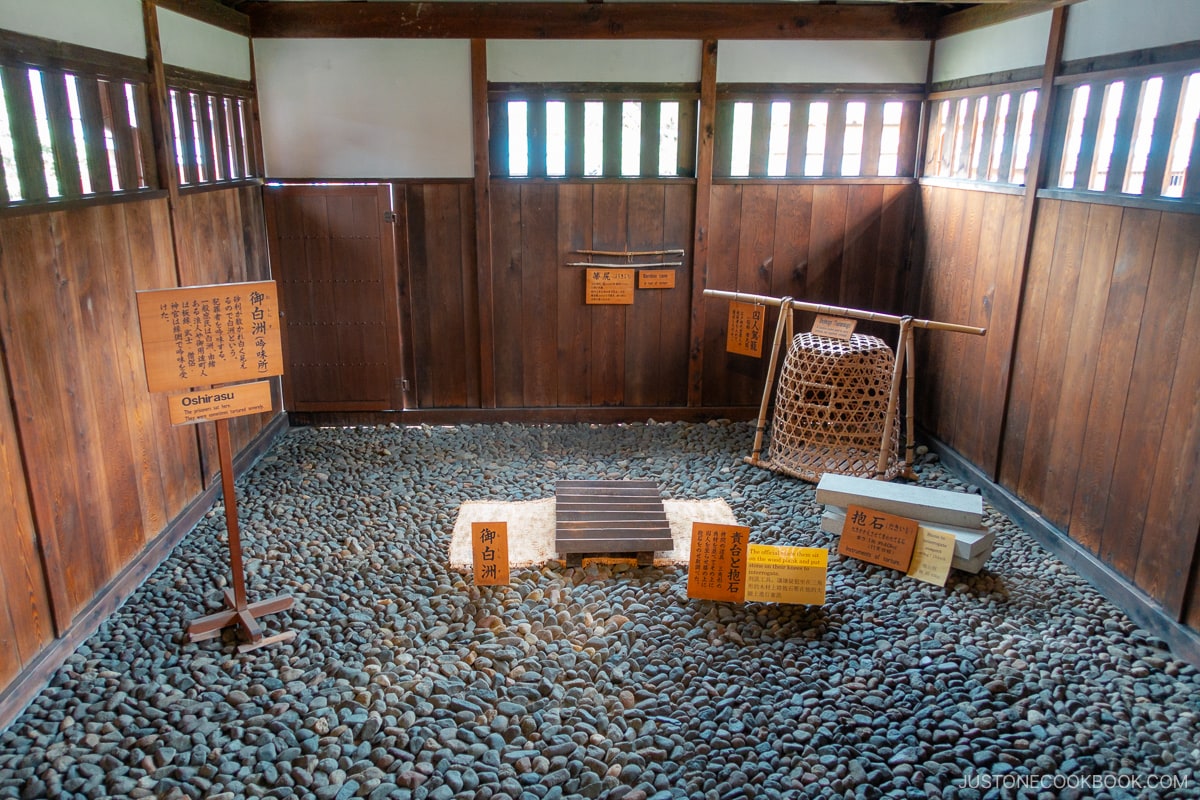
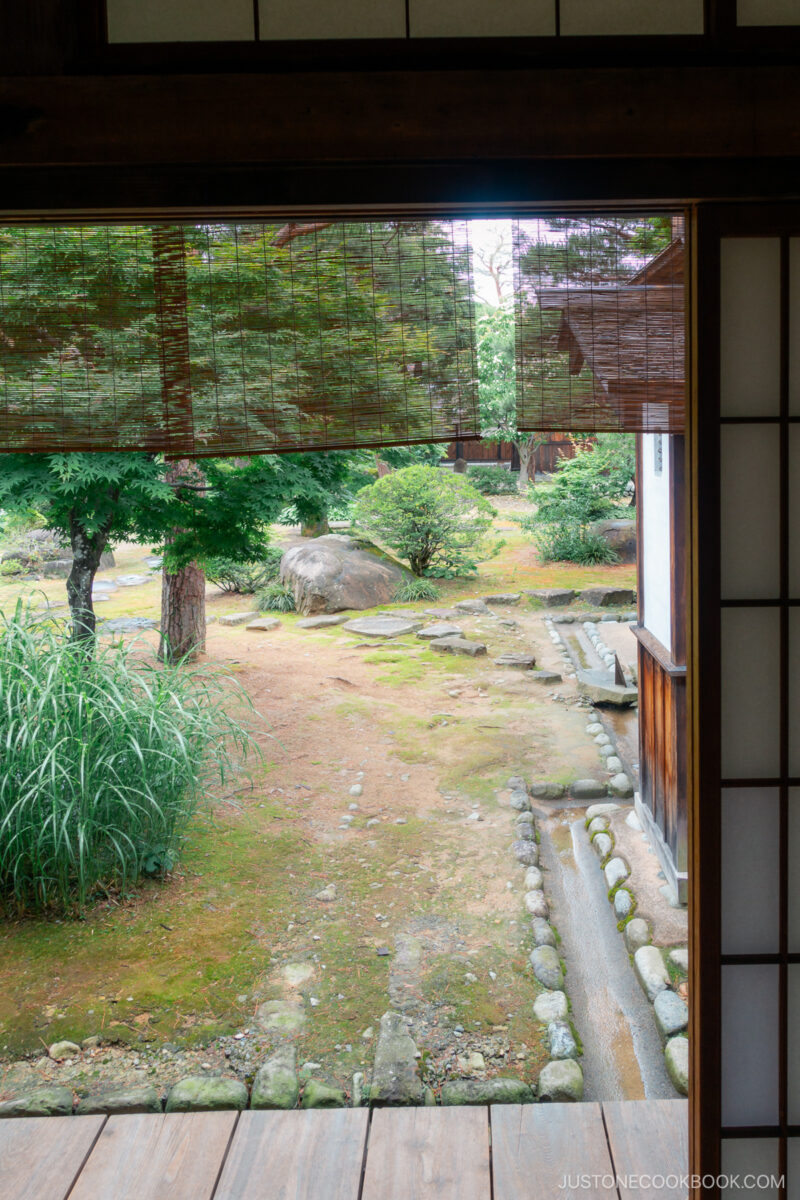
Most rooms have signs explaining their purpose in English, and you can also request a free English-speaking guide at the ticket office.
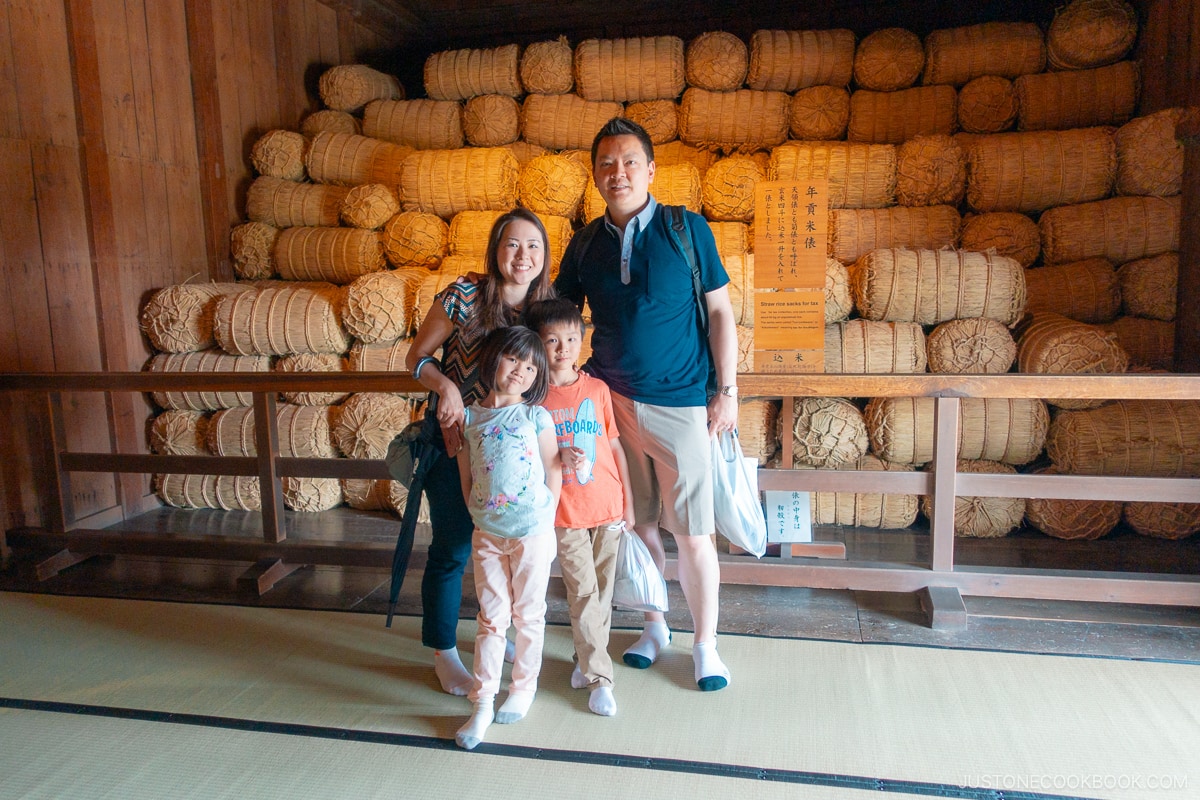
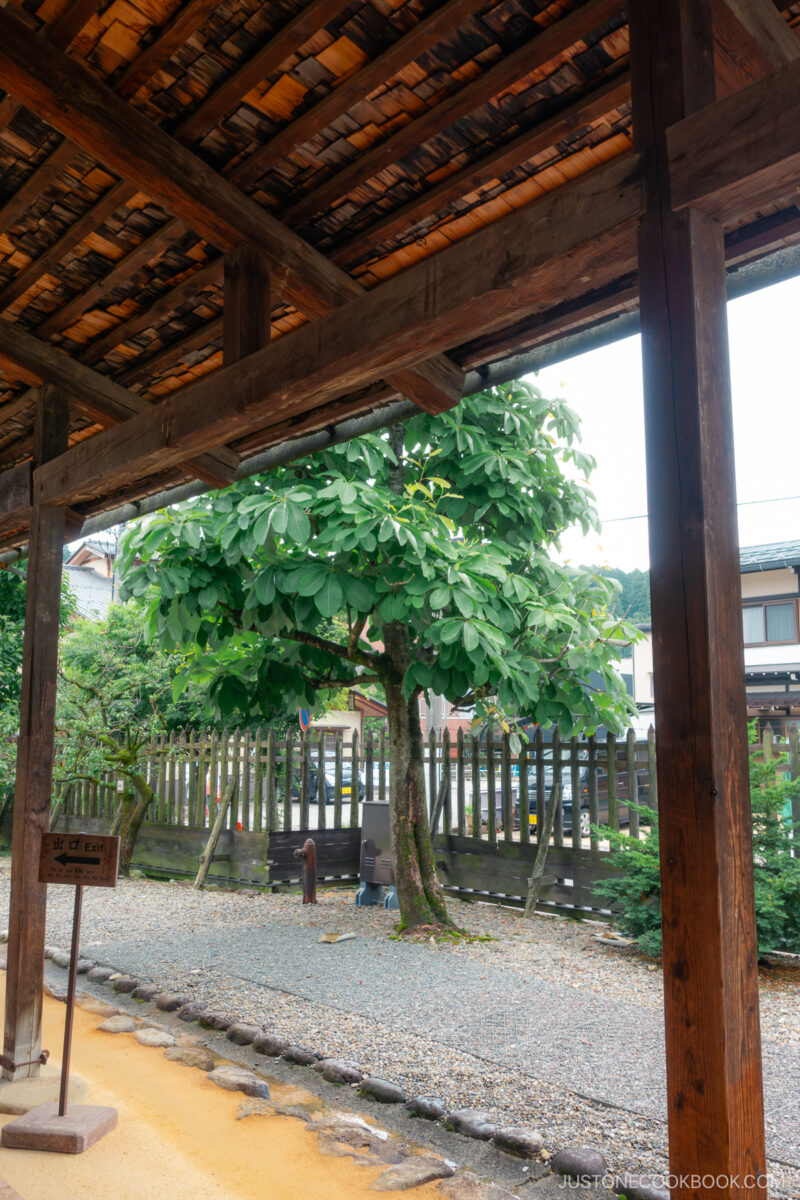
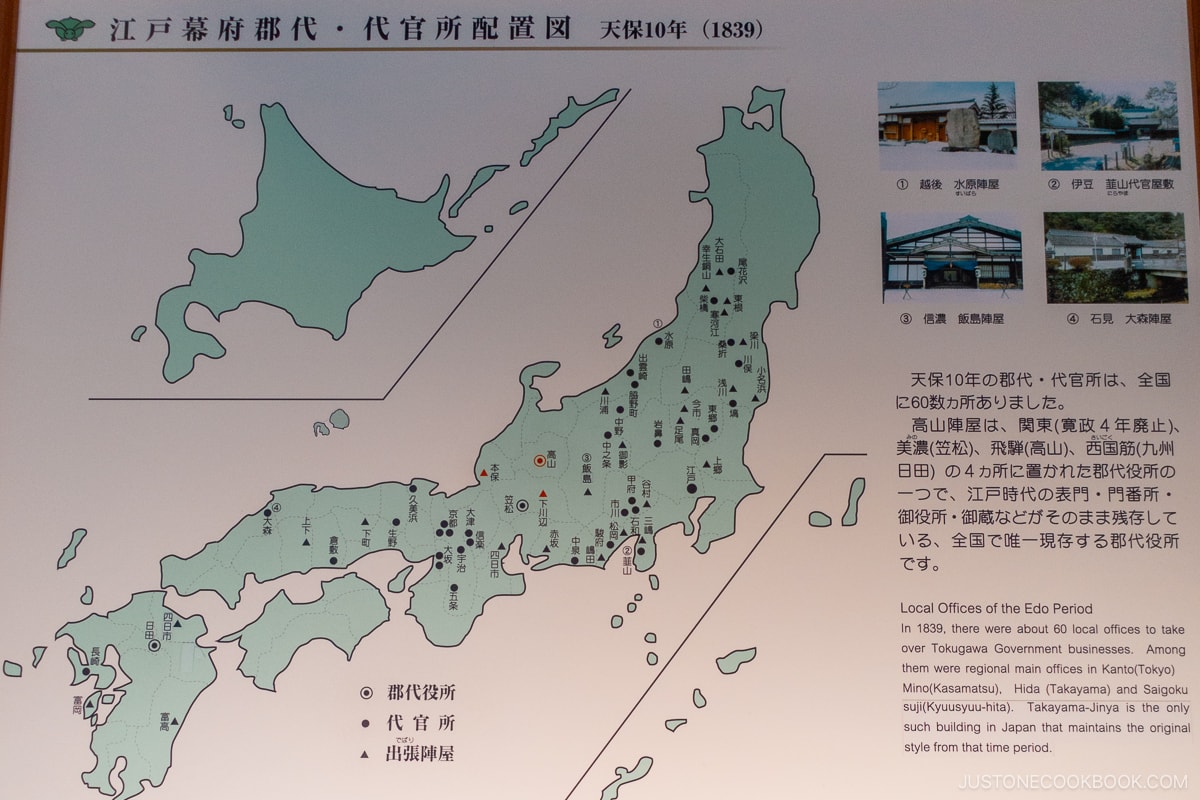
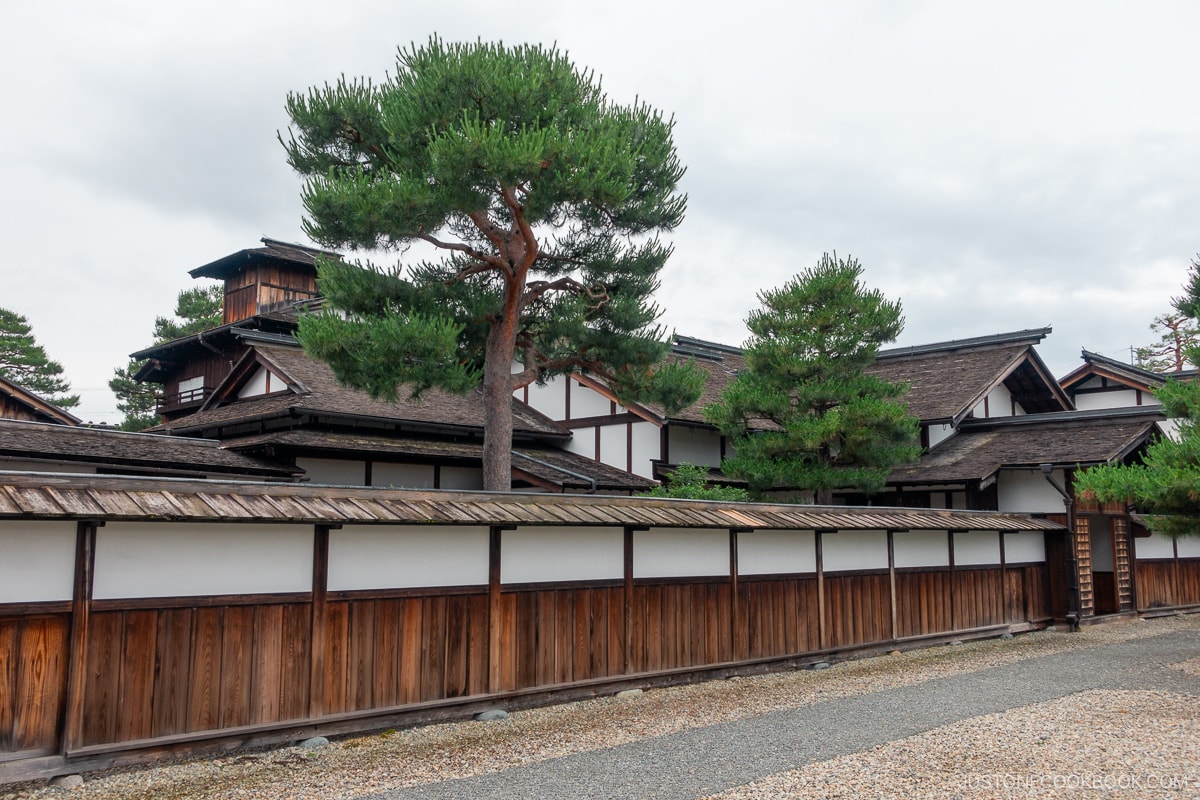
Takayama Jinya Asaichi 高山陣屋朝市: A Taste of Tradition
Alongside the Miyagawa Morning Market that we visited, there is Jinya Asaichi, situated right outside Takayama Jinya. It is known as one of Japan’s three great morning markets. These markets trace their history back to the 1820s. Jinya Asaichi relocated within the city a few times but has been located outside Takayama Jinya since 1922.
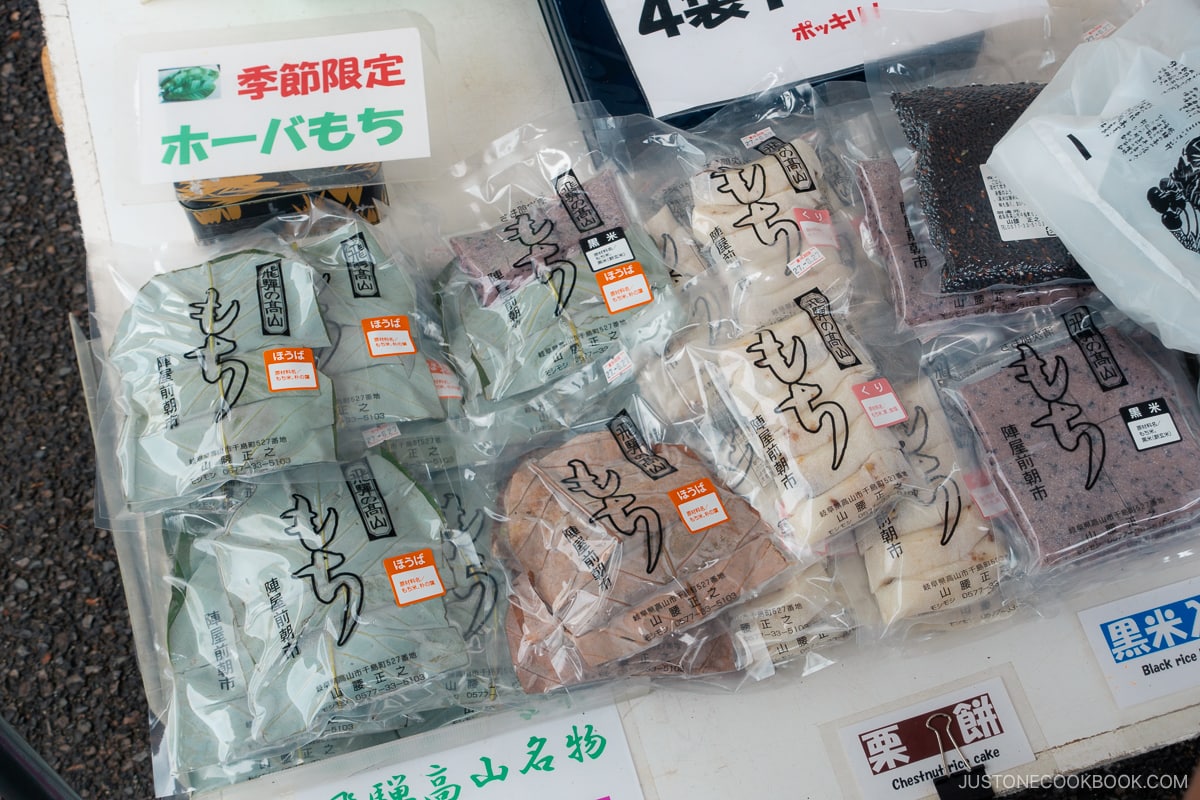
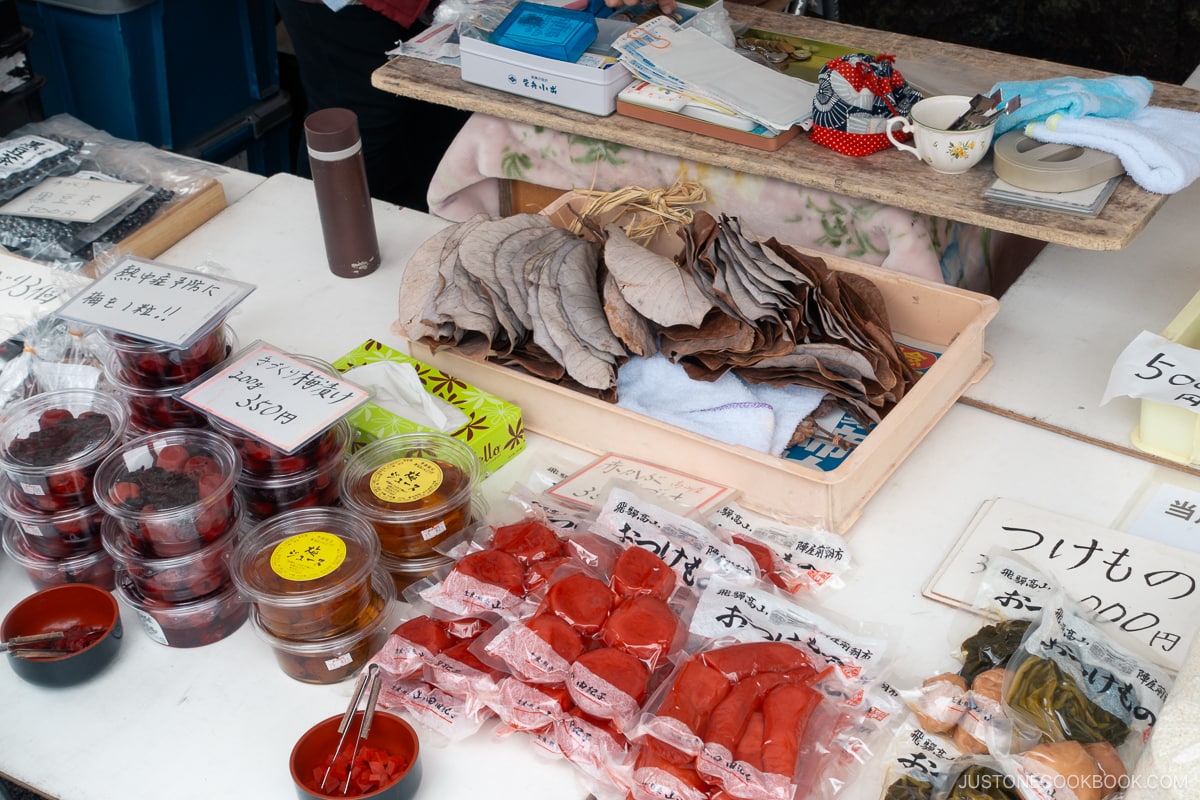
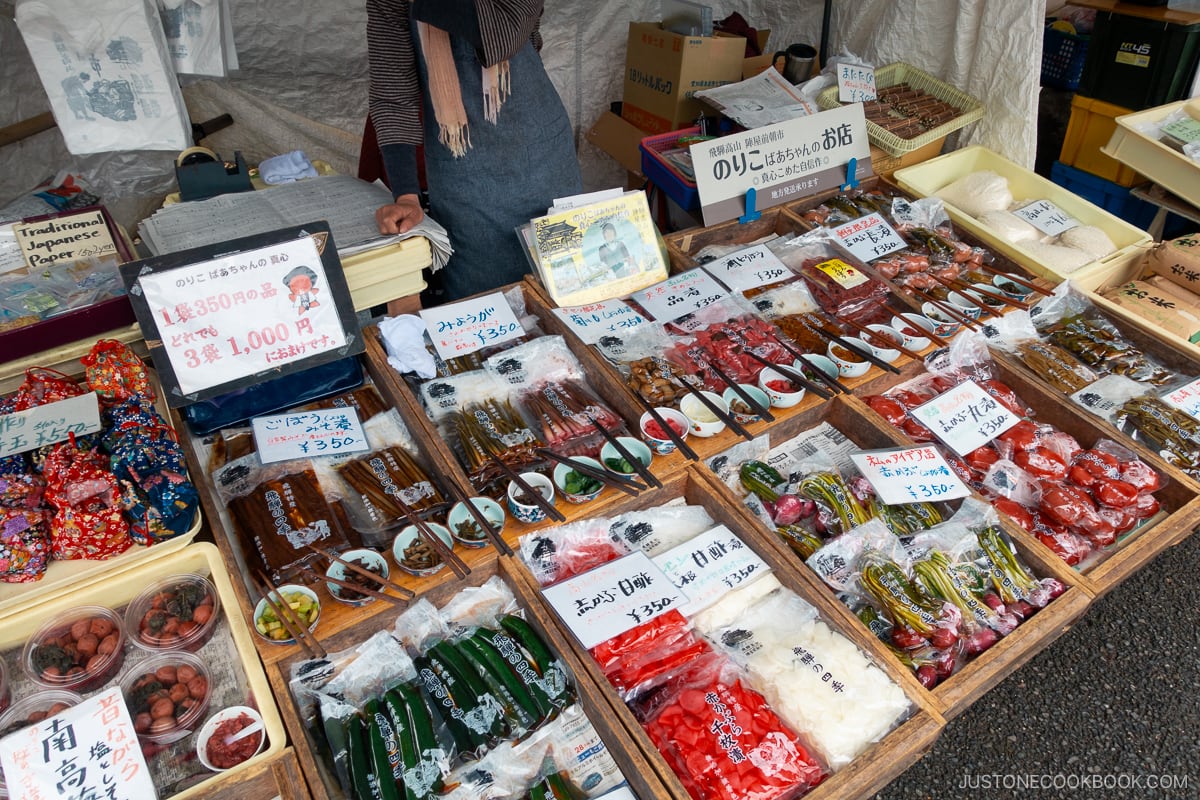
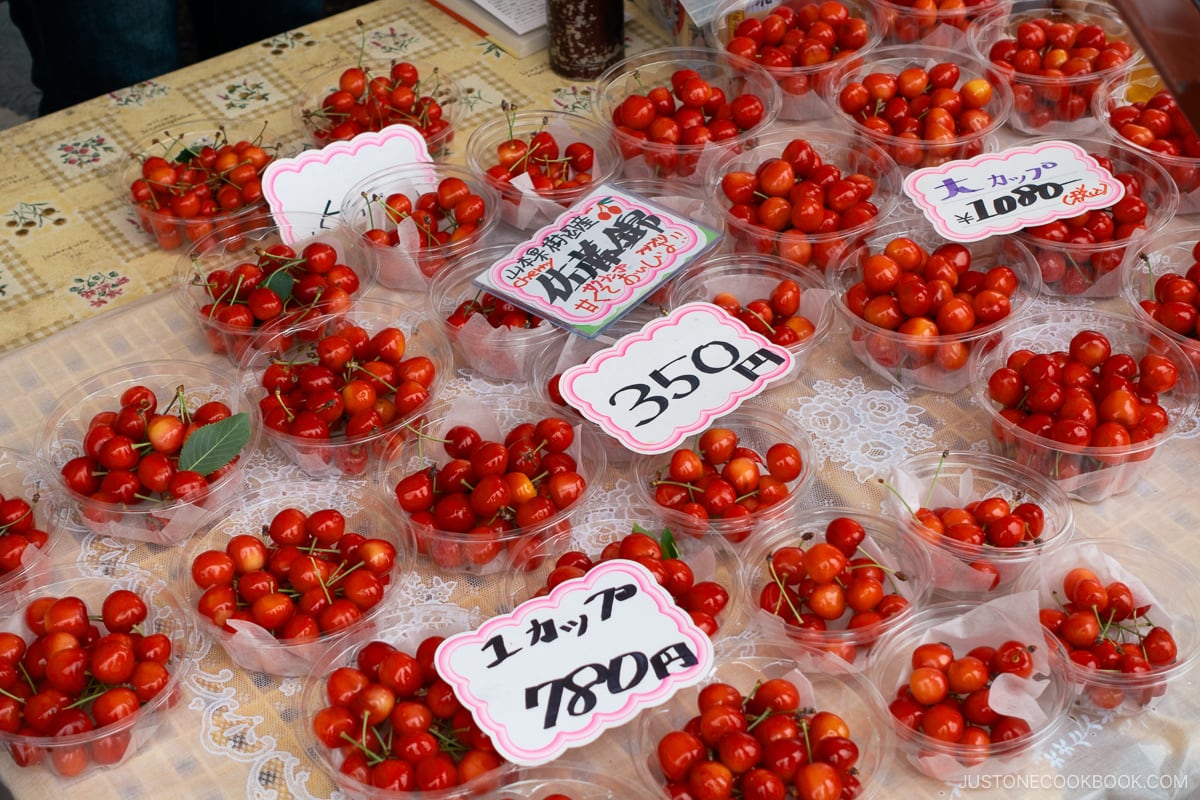
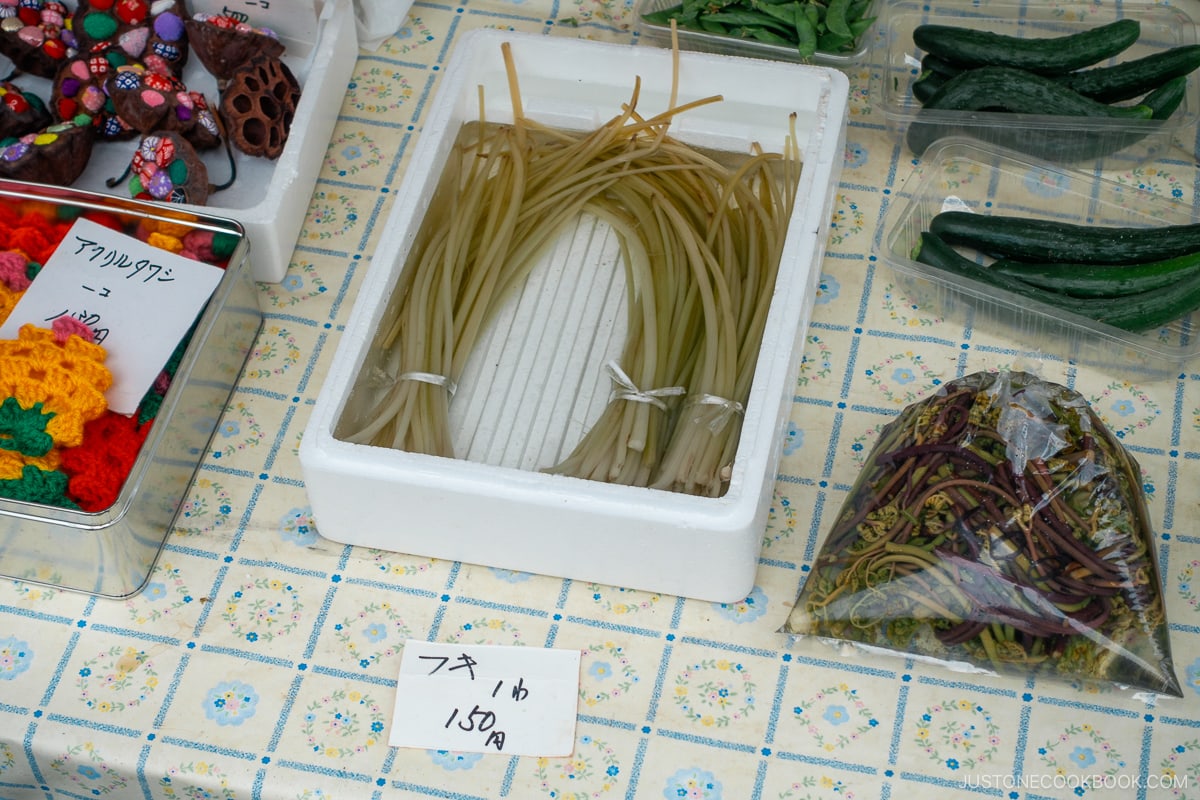
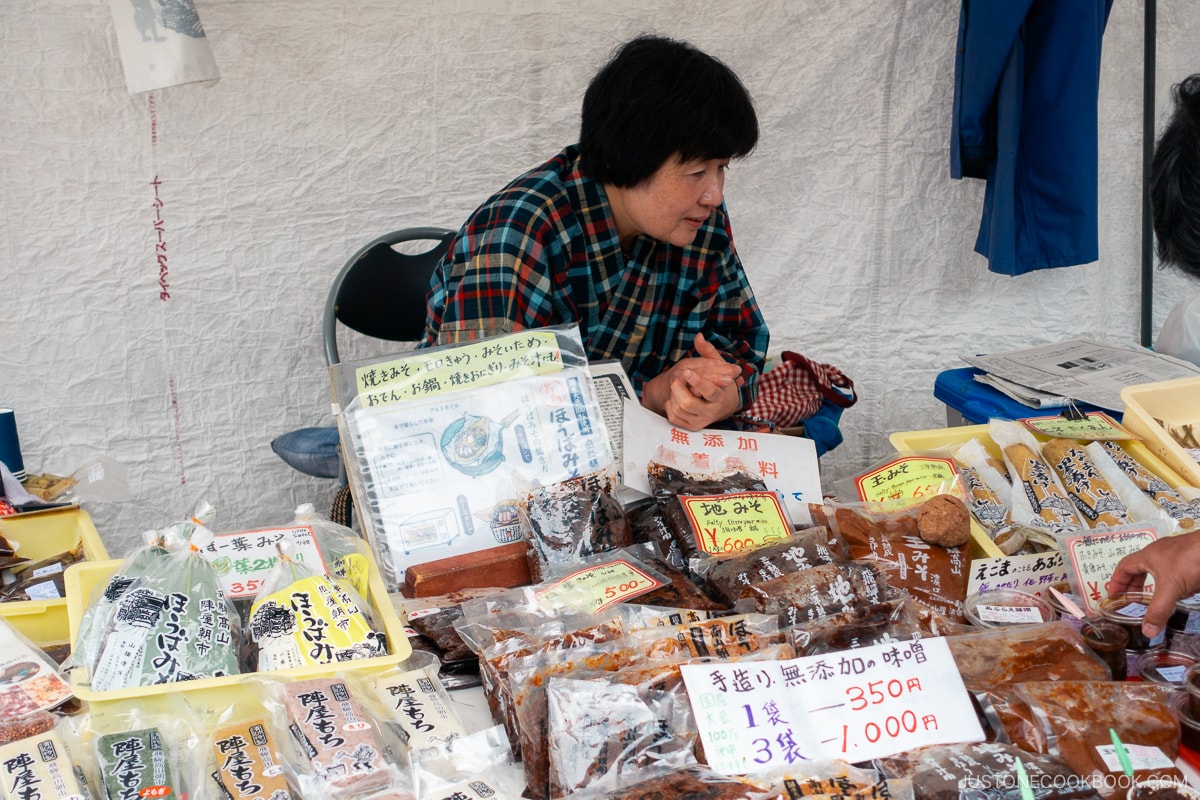
Compared to the Miyagawa Morning Market, Jinya Asaichi has a much longer history, but it is smaller in size. Instead of souvenir or gift shops, it features day booths run by farmers and local food producers.
We bought some Hoba Mochi, a local specialty, and enjoyed it on our way back to Yokohama.
Takayama City Archives Museum 高山市政記念館: Unveiling the Past
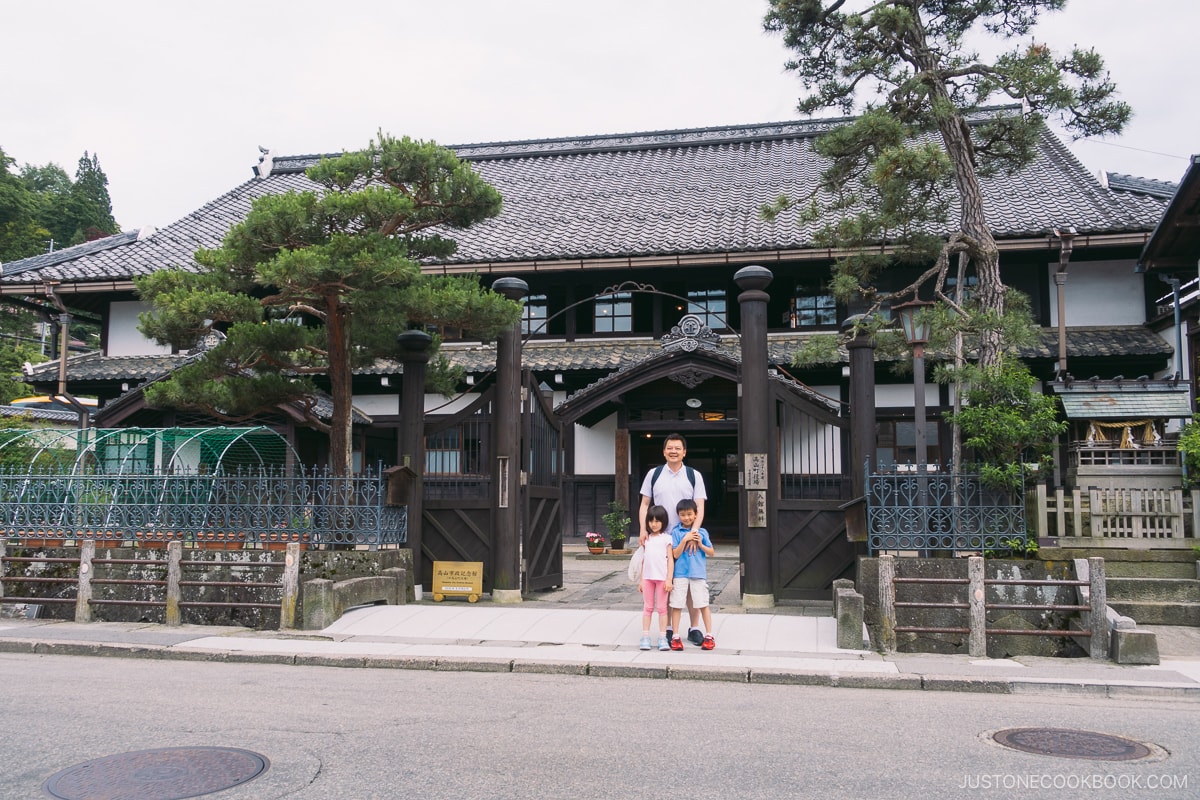
After our visit to the morning market, we took a short walk and headed across the Nakabashi Bridge (中橋). Shortly after the bridge is the Takayama City Archives—the old Town Office which is free for anyone to enter.
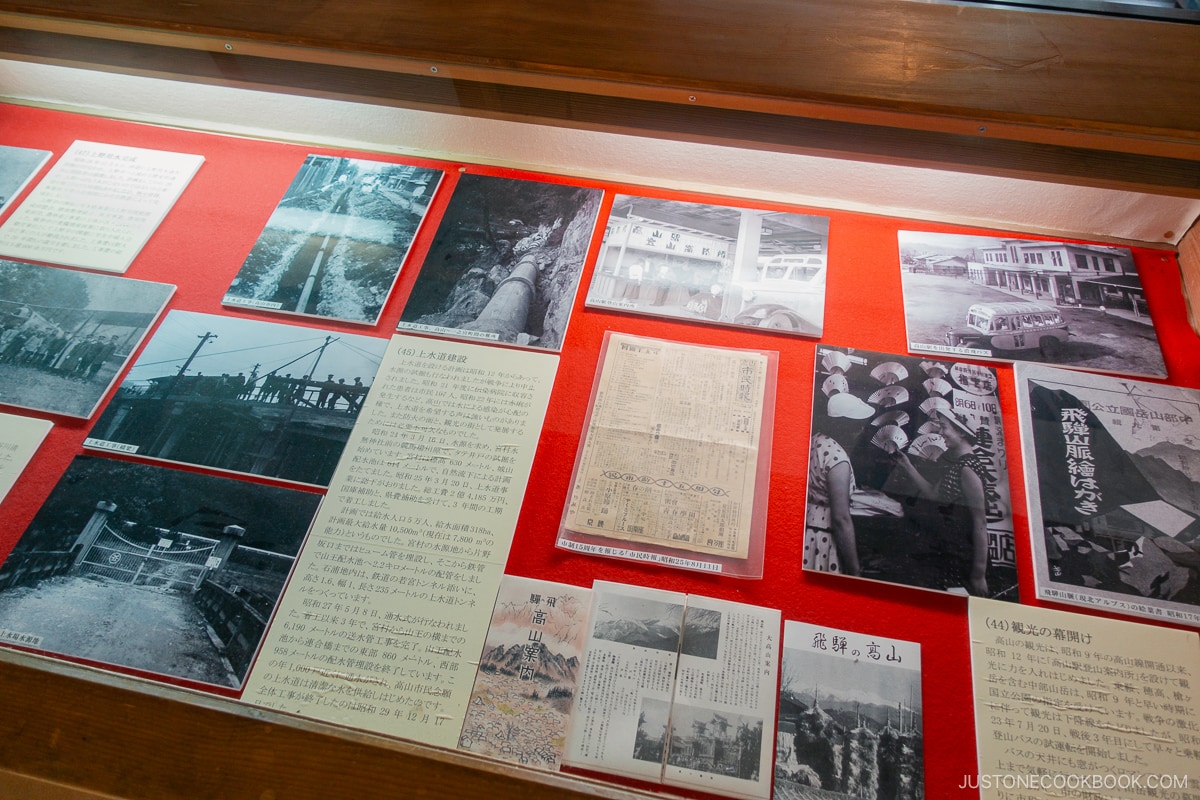
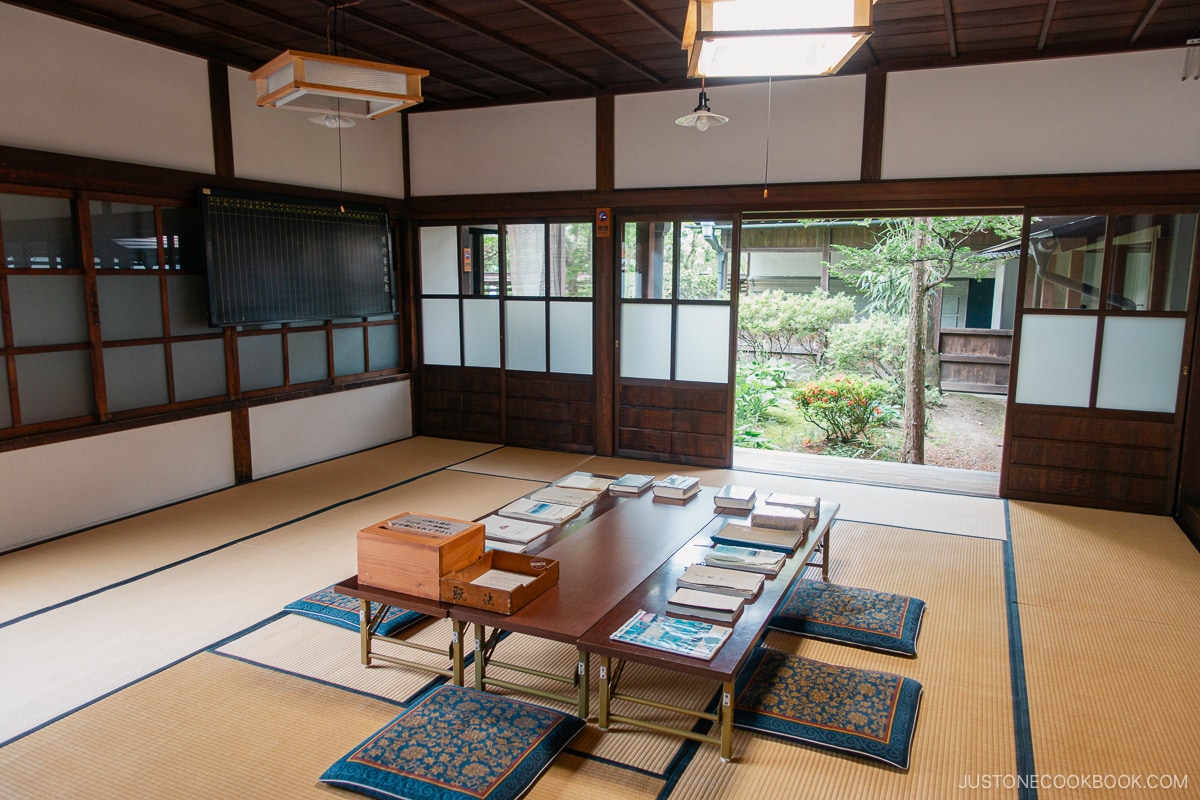
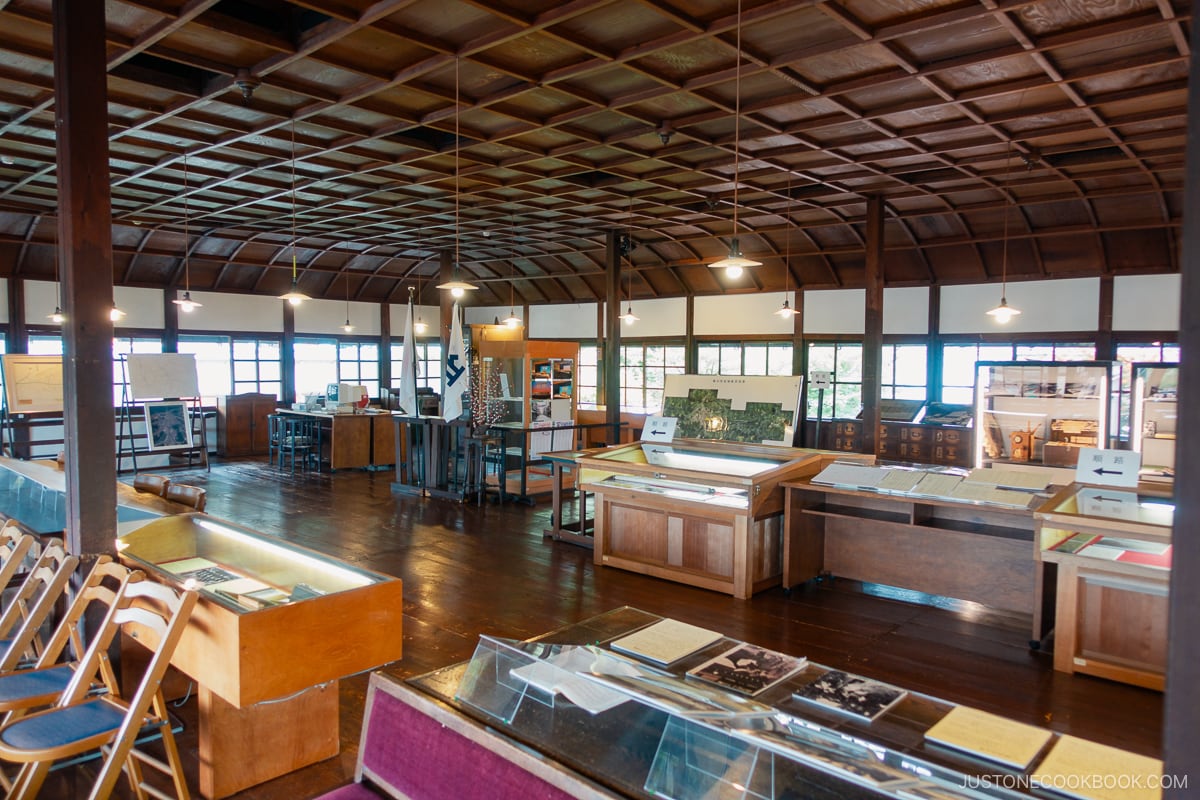
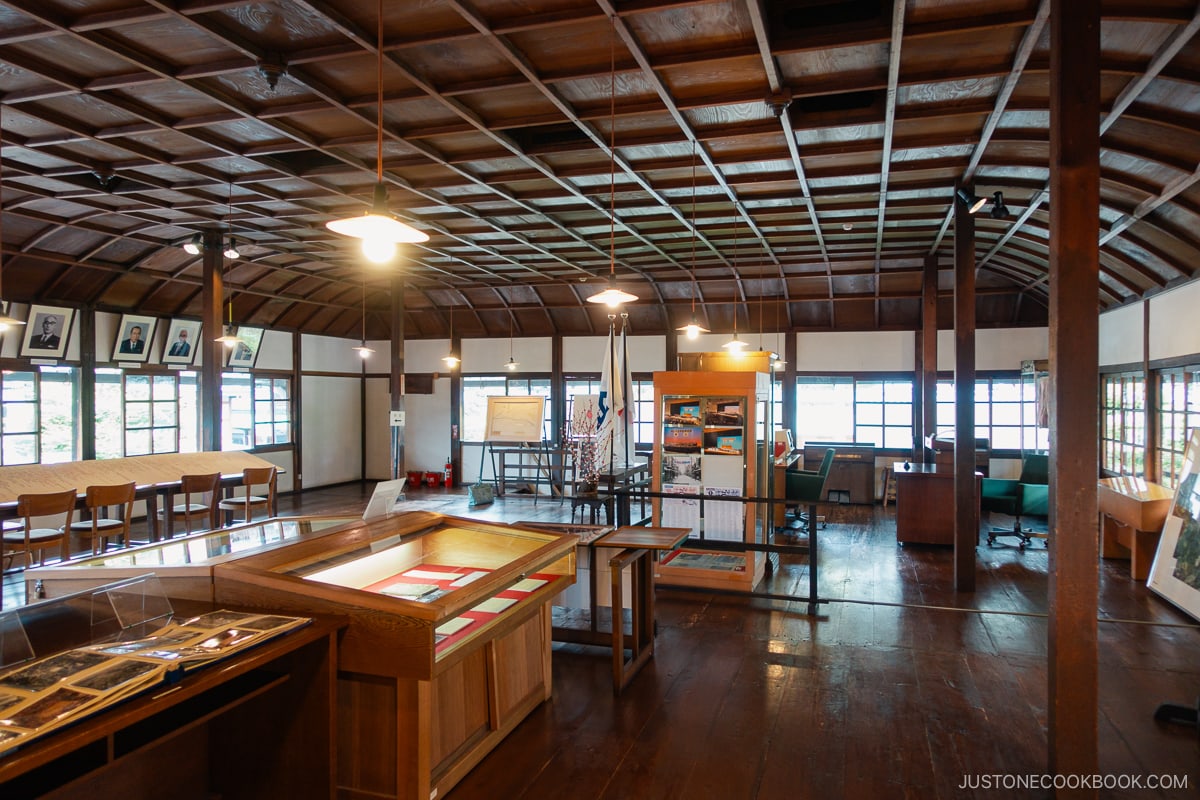
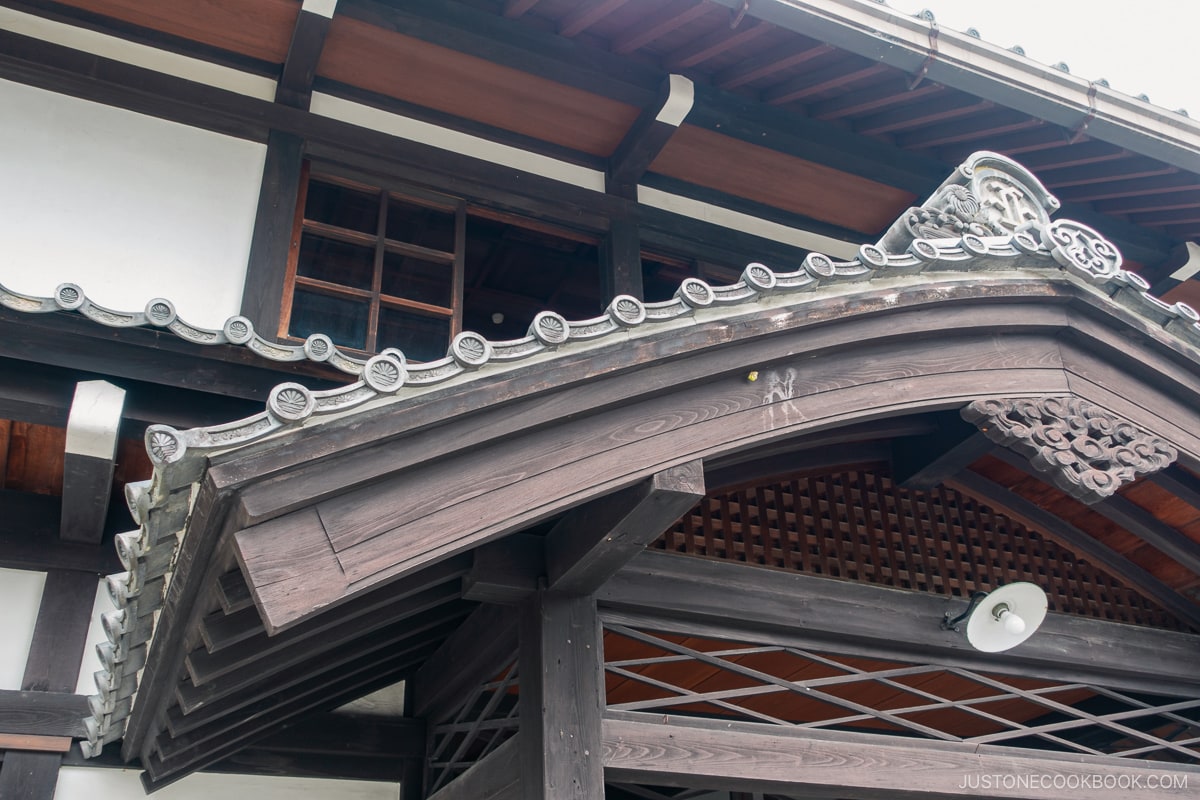
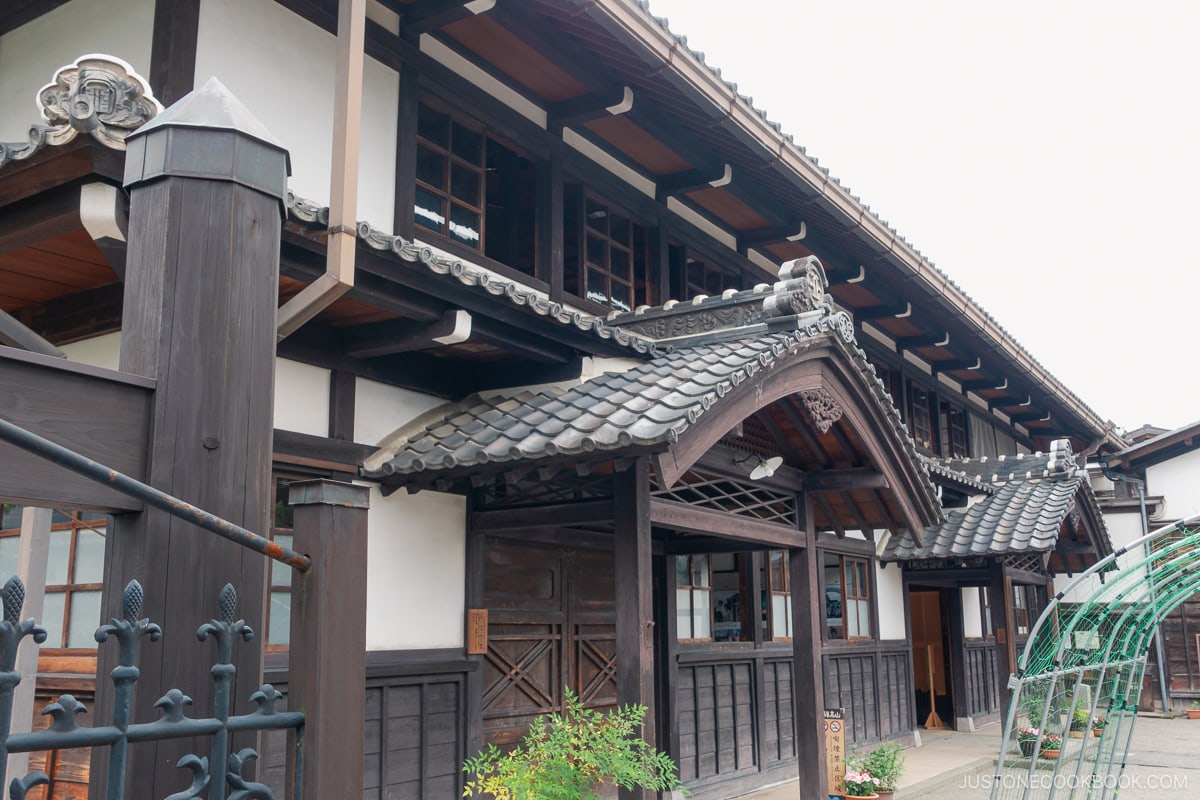
The building showcases the craftsmanship of local carpenters and artisans. It was primarily constructed using hinoki (Japanese Cypress), allowing visitors to appreciate traditional Takayama architecture. Additionally, it’s the first building in the area to feature glass windows.
Besides the liberal use of glass windows, the curved lattice ceiling of the meeting room on the second floor (shown below) also incorporates Western-style elements. Upstairs in the building, you’ll find numerous exhibitions.
Takayama Sanmachi Suji/Kami Sannomachi 三町: Walking through History
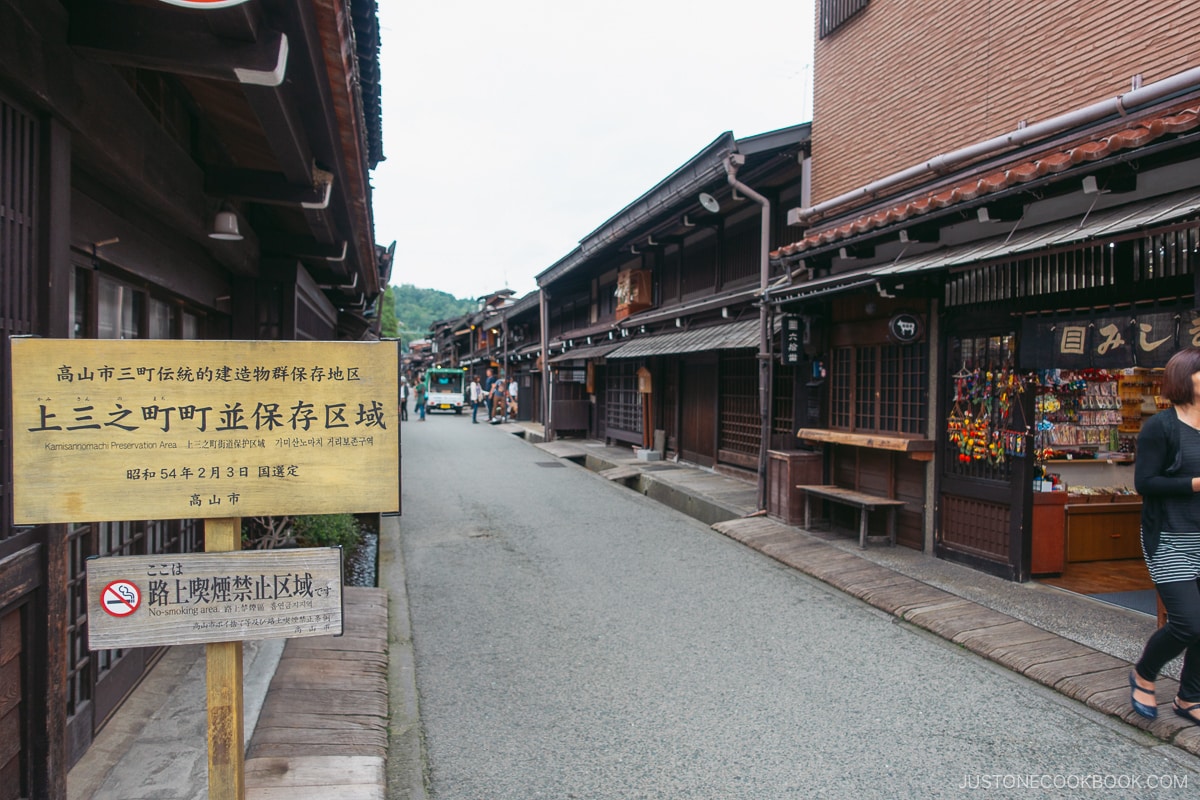
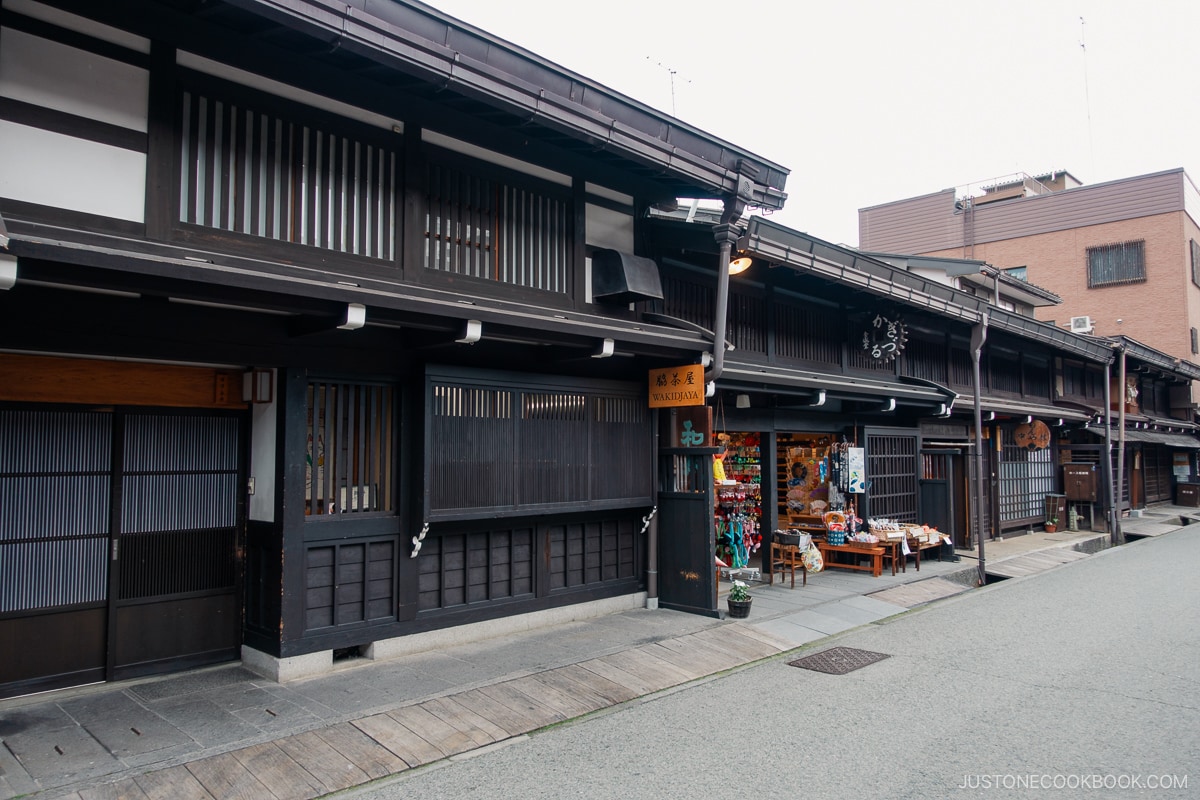

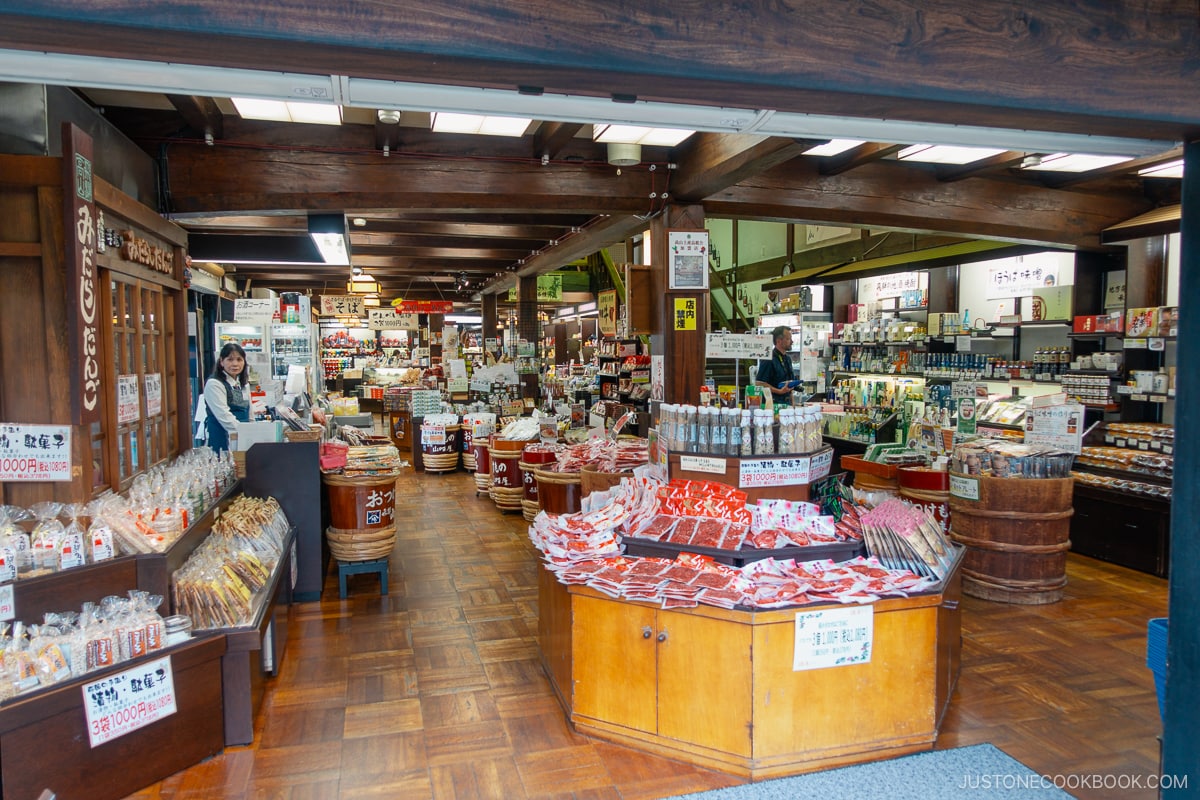
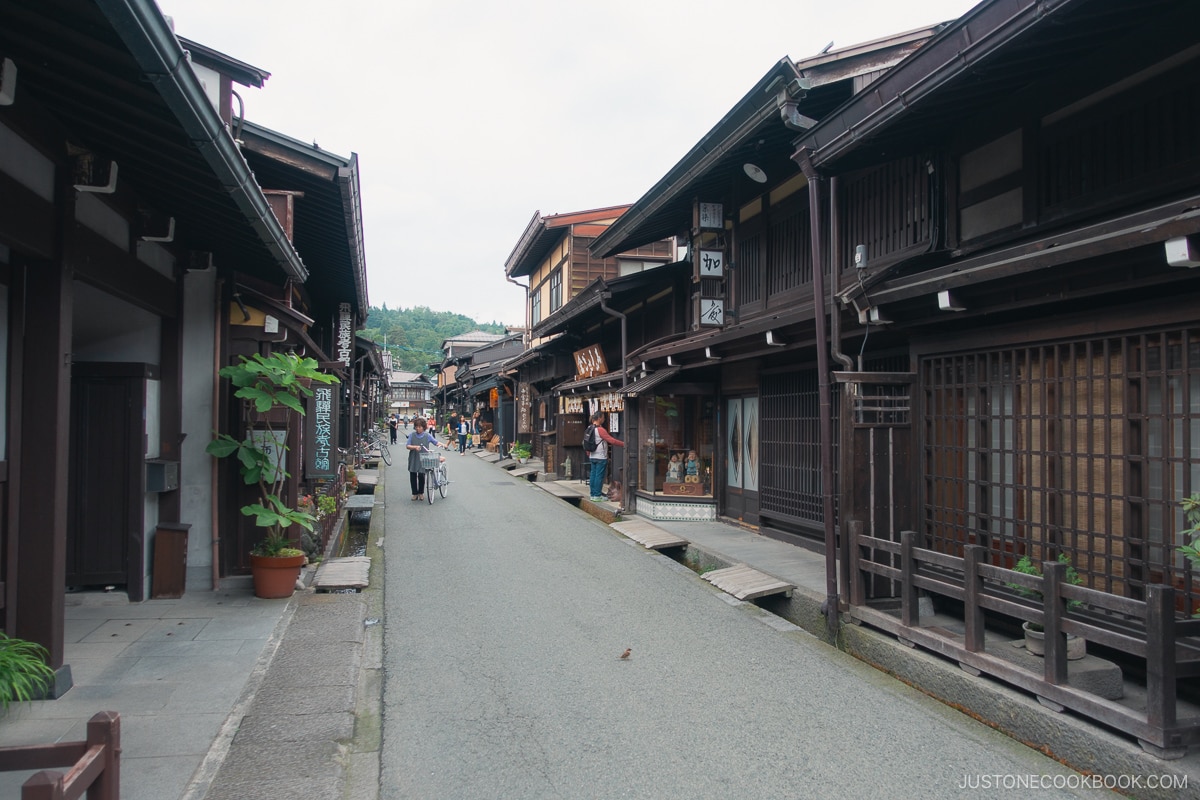
The Sanmachi Suji (sometimes referred to as “little Kyoto”) and Kami Sannomachi Alley, right across from the city archives museum, is one of the best-known features of the region, the old street of Sanmachi, attracting hundreds of thousands of tourists every year. This unique old street still has many buildings and houses from the Edo period standing.
Along the street, there are shops, sake breweries, restaurants, cafes, and artisans showing local crafts. You can enjoy local specialties like Hida beef, traditional Japanese sweets, and various other snacks.
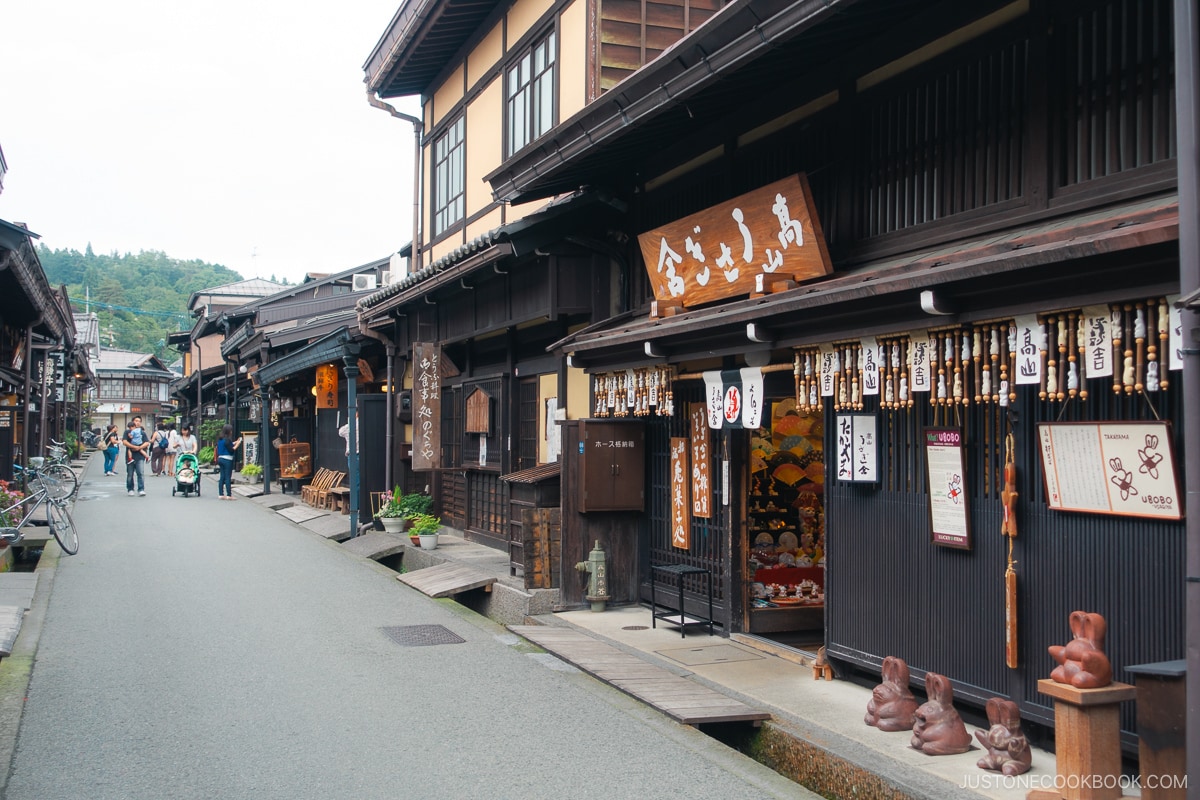
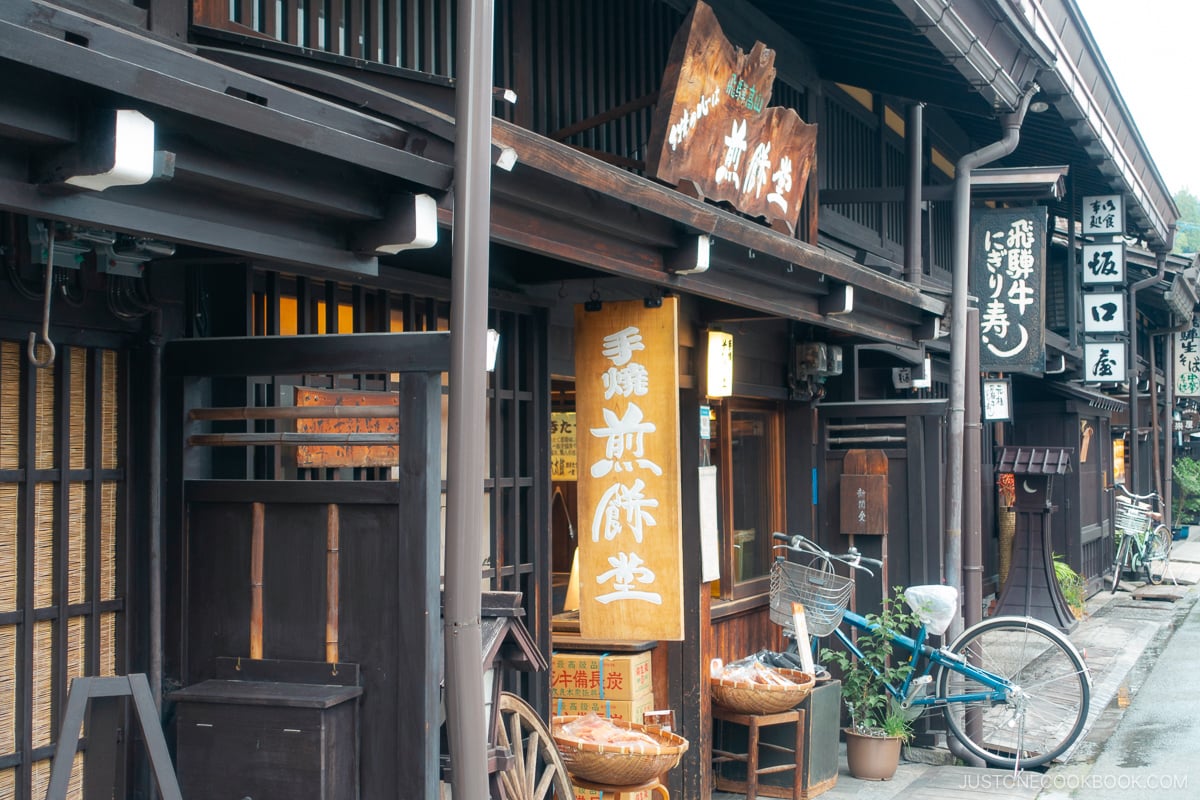
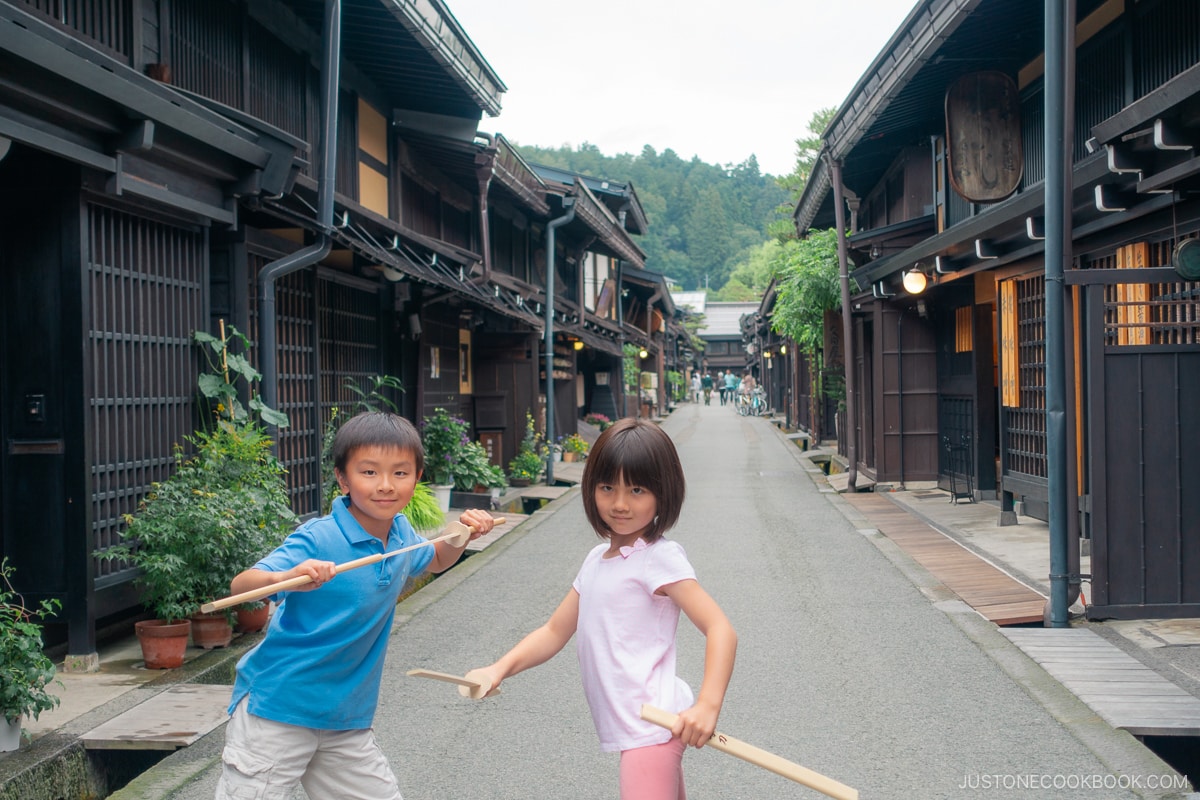
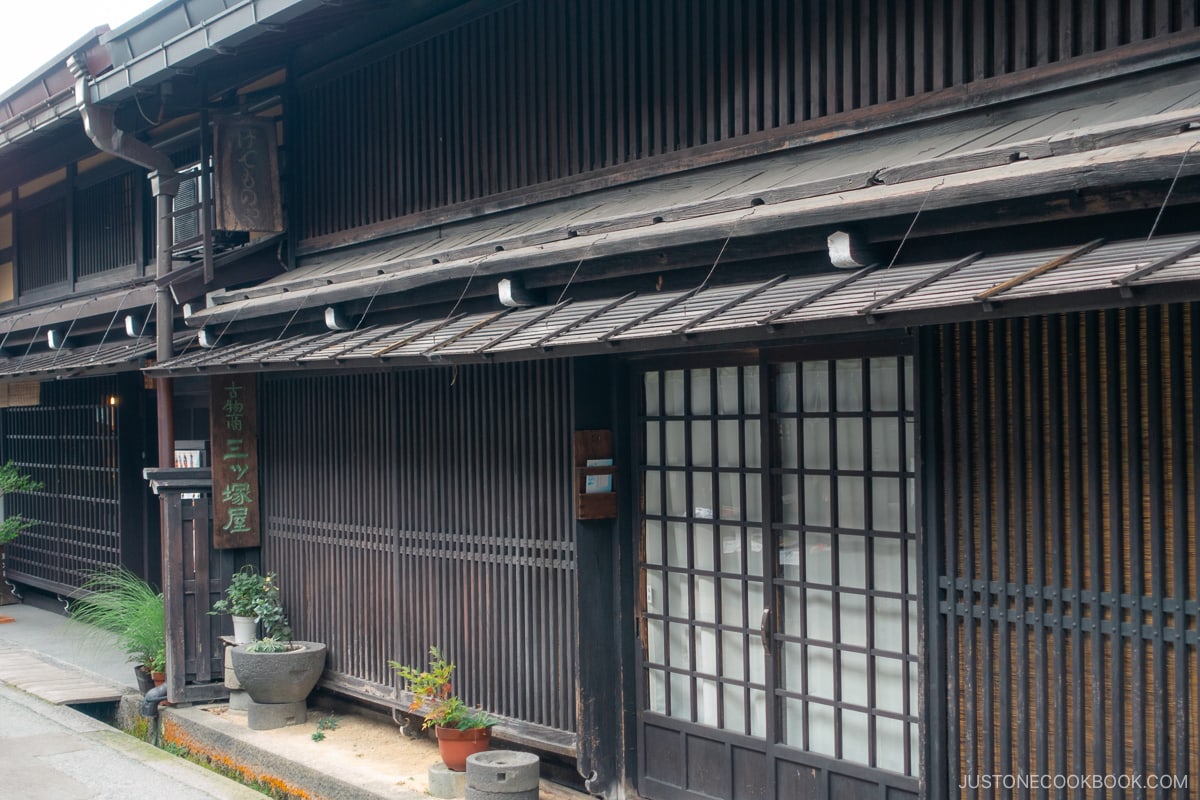
We loved the old buildings with their Japanese windows; it felt like we had just time-traveled to the past.
The kids asked us to buy them wooden swords so they could play-fight. Look at how happy they were!
Takayama Museum of History and Art 飛騨高山まちの博物館: A Step Back in Time
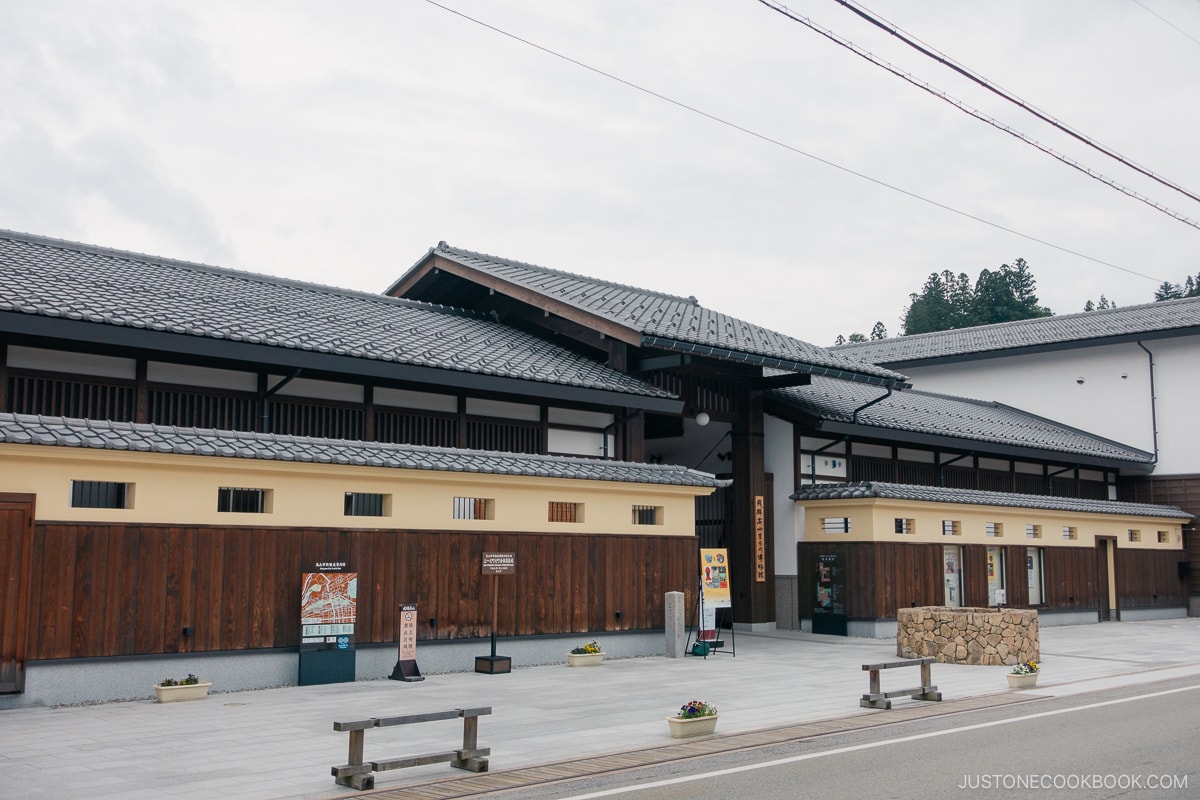
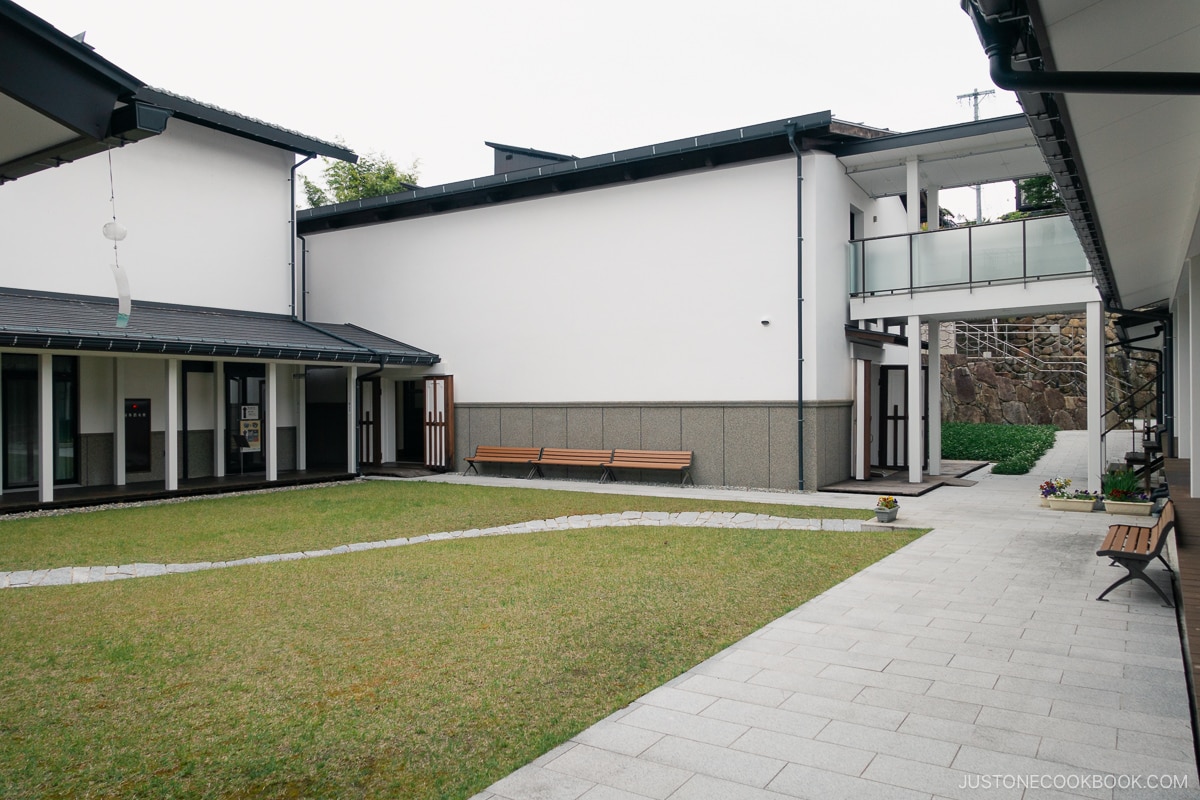
After strolling through the old streets, we headed up the hill to enjoy the Takayama Museum of History and Art. This expansive museum consists of 14 rooms exhibiting nearly 1,000 artifacts. These artifacts depict various periods in the rich history and culture of the region, including the Takayama Festival.
Most of the items on display were on loan from private individuals, so no photos were allowed in the viewing rooms. Each artifact offers a glimpse into the region’s past. The museum has free admission and is well worth a visit.
Hida Kokubun-ji Temple 飛騨国分寺
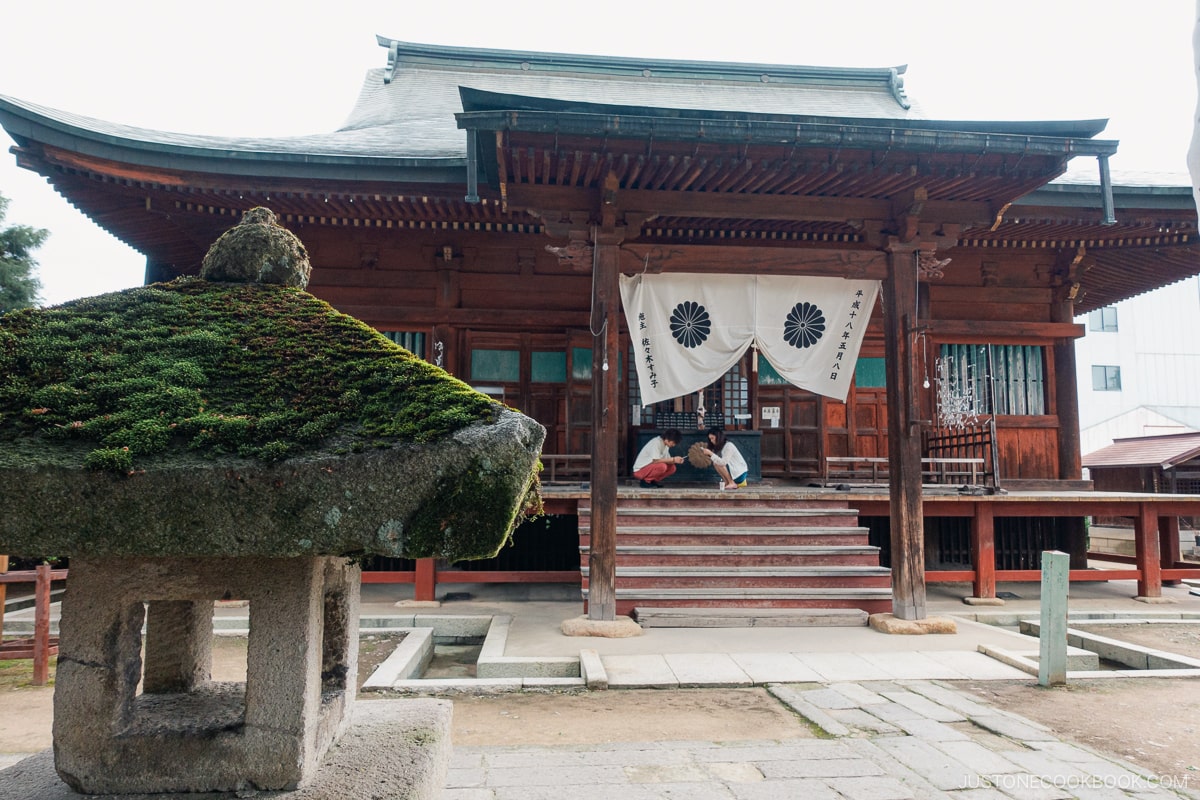
After spending some time in the museum, the next stop is a bit farther away, but not too far (a 12-minute walk). Head in the direction of the train station to reach Hida KokuBun-ji Temple. The entrance fee is 300 yen for adults and 250 yen for children.
Within Kokubun-ji Temple’s serene grounds, you’ll find the temple itself, a three-story pagoda, a bell tower gate, and a ginkgo tree over 1,200 years old. The original temple was built in 746 but was subsequently burnt down. The current temple, built during the Muromachi period (1336-1573), stands as the oldest structure in Takayama
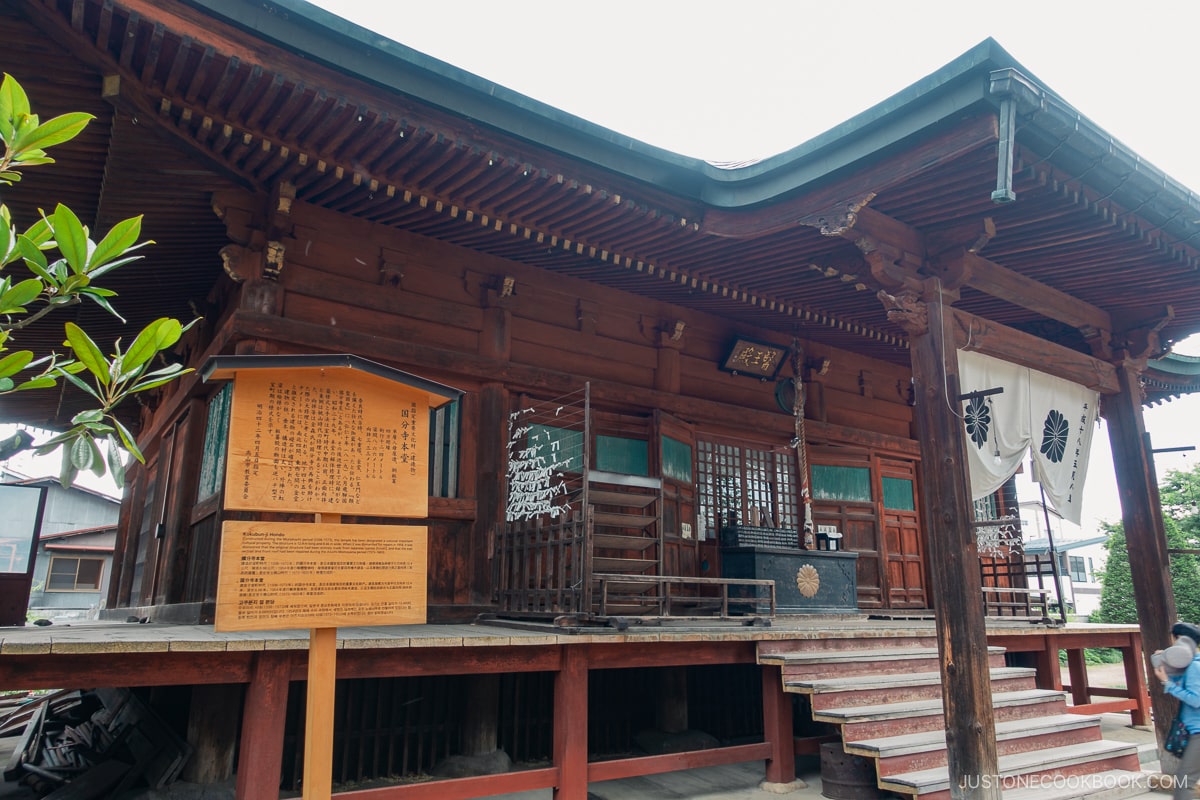
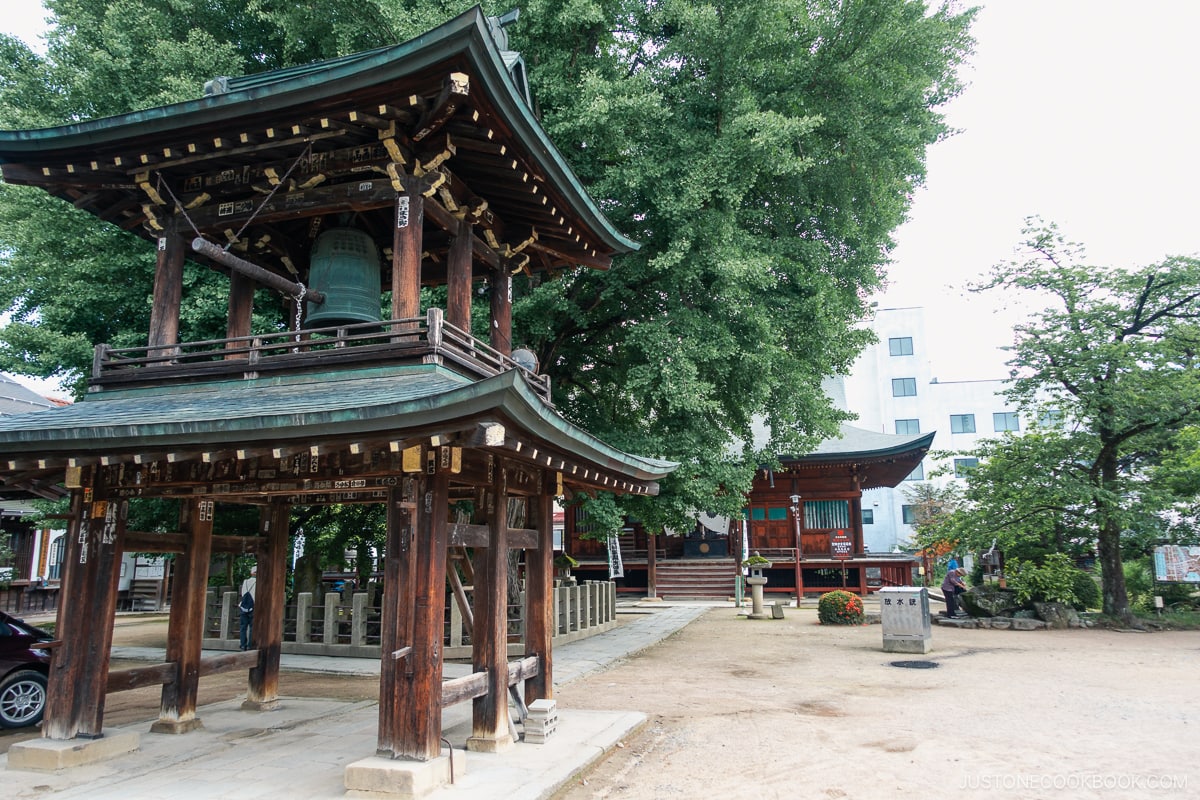
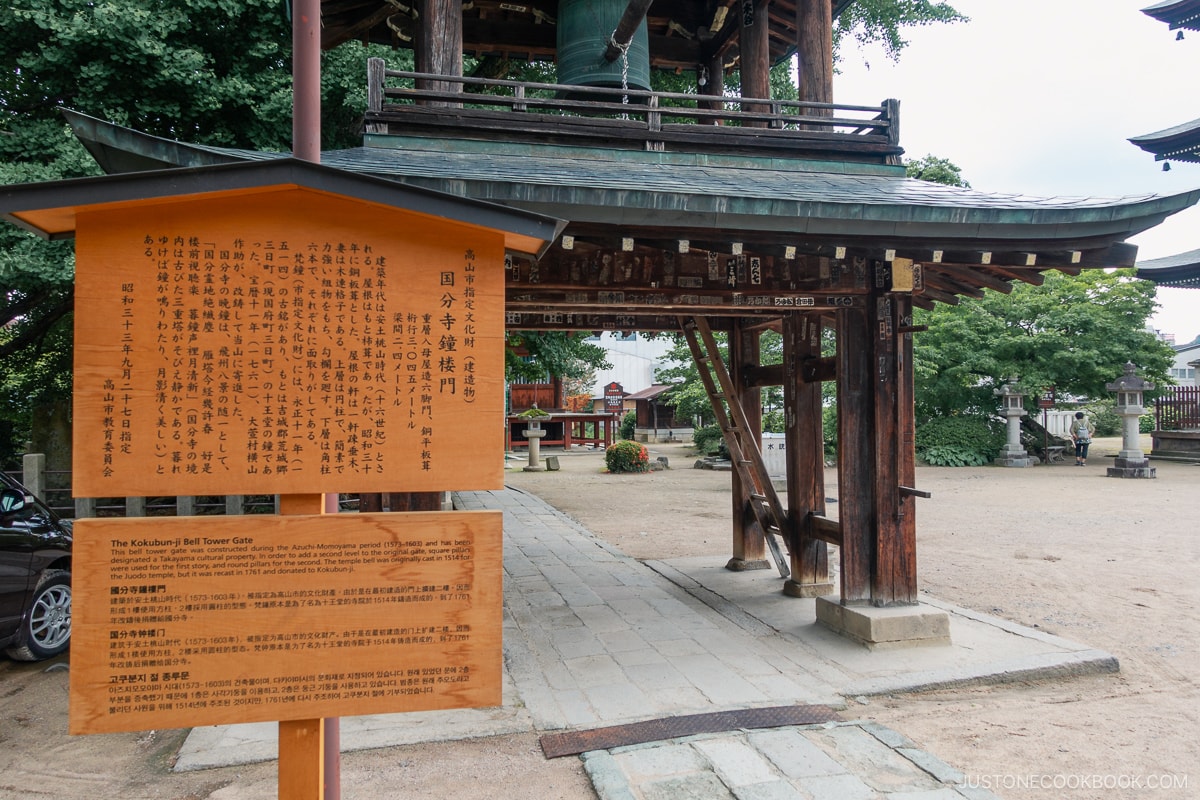
The original three pagoda was built in 1615 by Kanamori Arishige (金森可重), who ruled the area. The existing one was rebuilt in 1821. The bell tower gate on the temple grounds was constructed between 1573-1603.
The giant 1,200-year-old ginkgo tree is absolutely stunning. We would love to see this tree in the fall when its leaves turn a golden yellow! One of the folklores we heard is that on the day after all the ginkgo leaves have fallen, the Hida Takayama area will receive its first snow of the season.
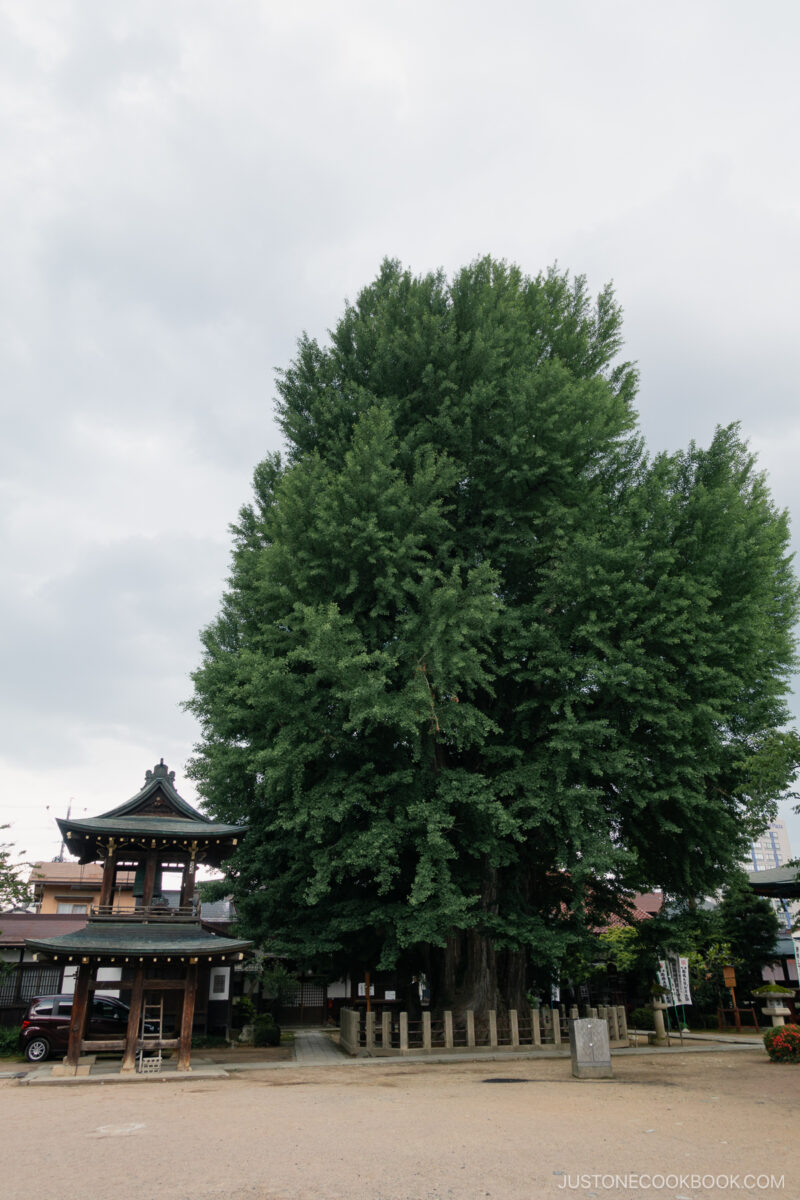
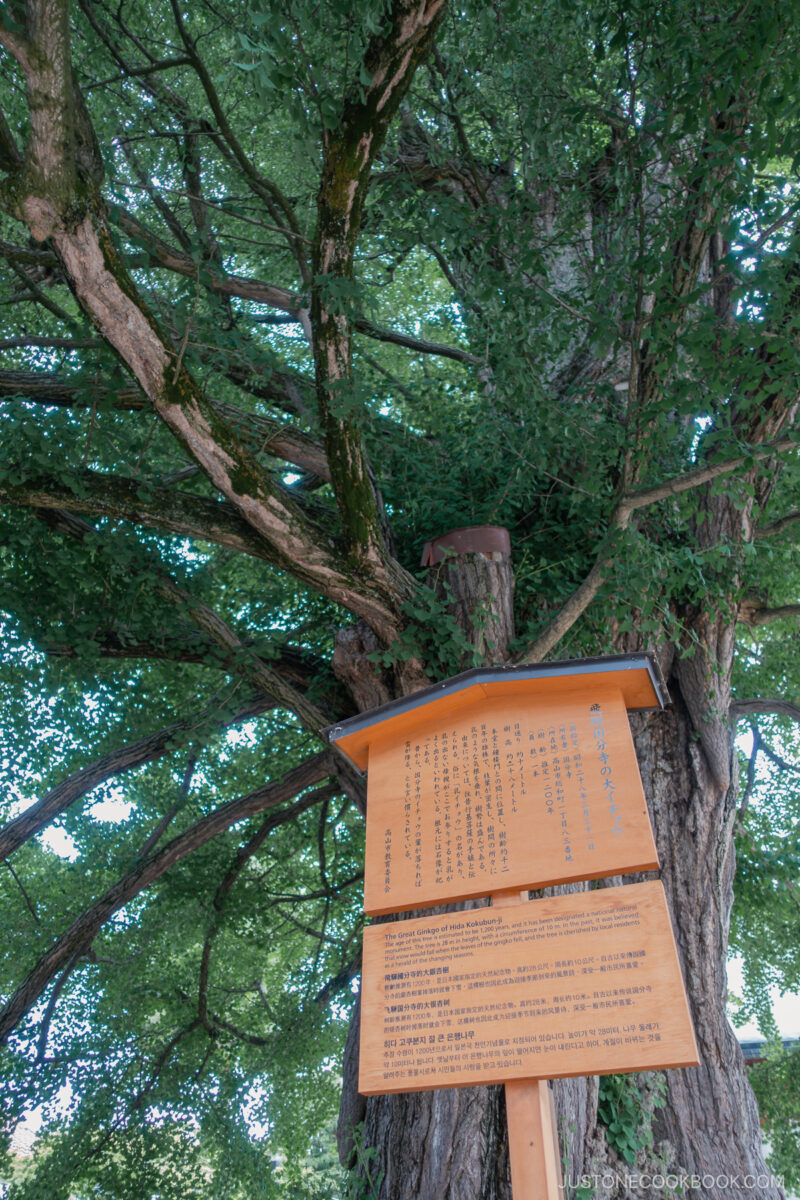
Hida Folk Village
There are a few other places of interest we didn’t have a chance to visit during our trip. The first one is the Hida Folk Village, an open-air museum showcasing over 30 traditional houses from the Hida region. All of these houses were originally built during the Edo Period (1603-1868) and were relocated to their current site in 1971. The museum is a 30-minute walk or a 10-minute bus ride from Takayama Station, west of the city center. The entrance fee is 700 yen for adults and 200 yen for children.
The museum features various structures, including logging houses, huts, the village head’s house, and gassho-zukuri farmhouses, which have roofs shaped like praying hands. All the buildings are meticulously preserved and maintained, allowing you to appreciate traditional architecture and the materials and tools used during those times.
Within these houses, the staff also demonstrates different arts and crafts such as wood carving and lacquerwork.
Takayama Showa-Kan Museum
We also missed the Takayama Showa-Kan Museum. The Showa Era (1926-1989) was one of the most significant periods in Japan’s history, encompassing Japan’s gradual descent into fascism, World War Two, and the subsequent economic boom. At the museum, you can experience life as it was during this tumultuous era. The entrance fees are 1000 yen for adults, 800 yen for high school students, 600 yen for junior high students, and 400 yen for elementary school students.
The museum recreates daily life in Takayama during the Showa Era, featuring old-style candy shops, hostess bars, and classic cars.
Views of Takayama
Takayama was an amazing city for us to visit. It wasn’t just the breathtaking iconic landmarks and picturesque green mountain scenery; we also had the opportunity to learn about its rich history and culture passed down from the Edo period.
It was one of our favorite places that we’ve visited in Japan, and we highly recommend you take a trip there. The atmosphere and surroundings offer a stark contrast to the atmosphere in Tokyo! If you are staying in Toyama or Nagoya, it’s also manageable as a day trip. This small city is rich in history, and its natural surroundings are unlike anywhere else in Japan.
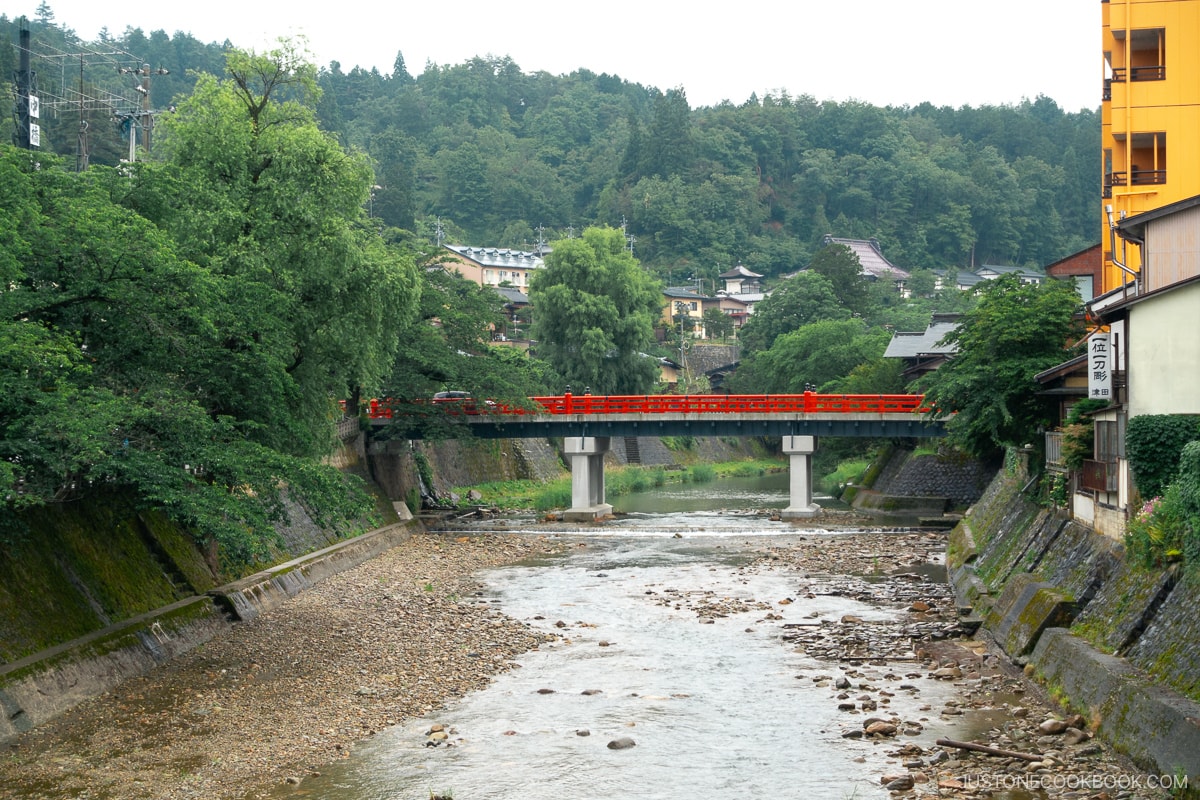
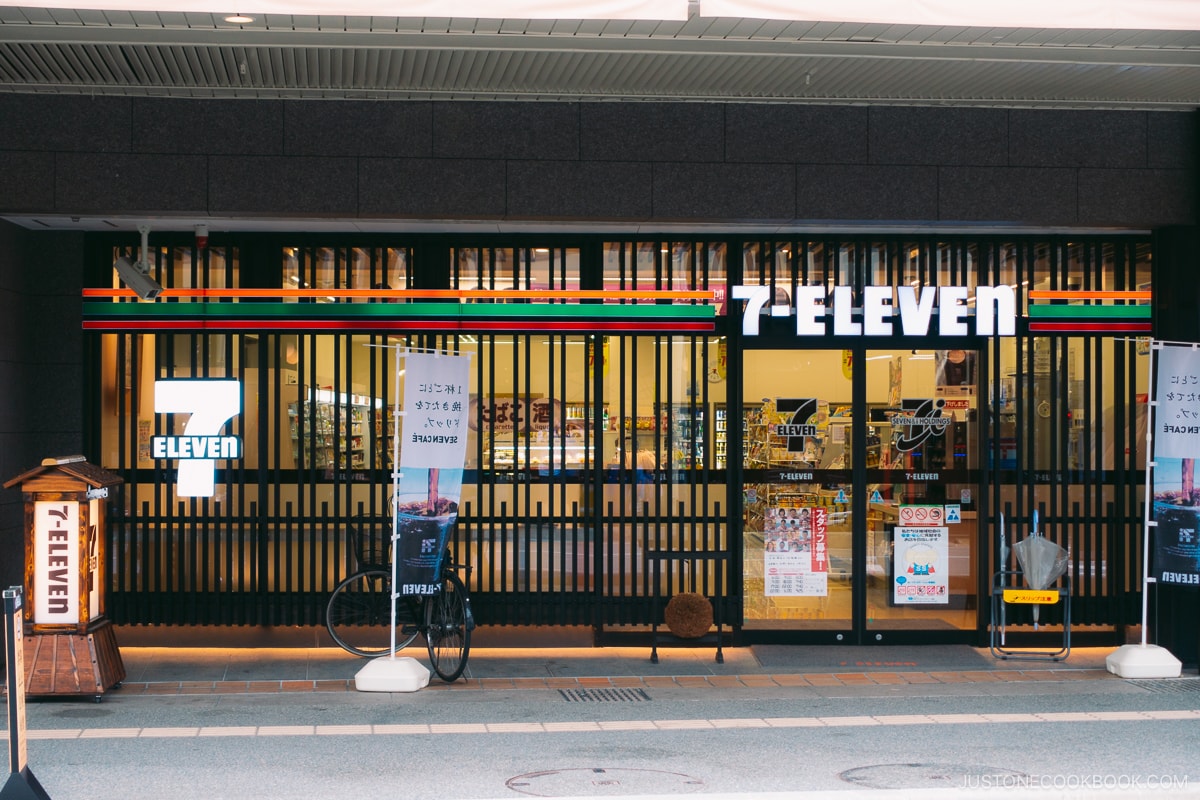
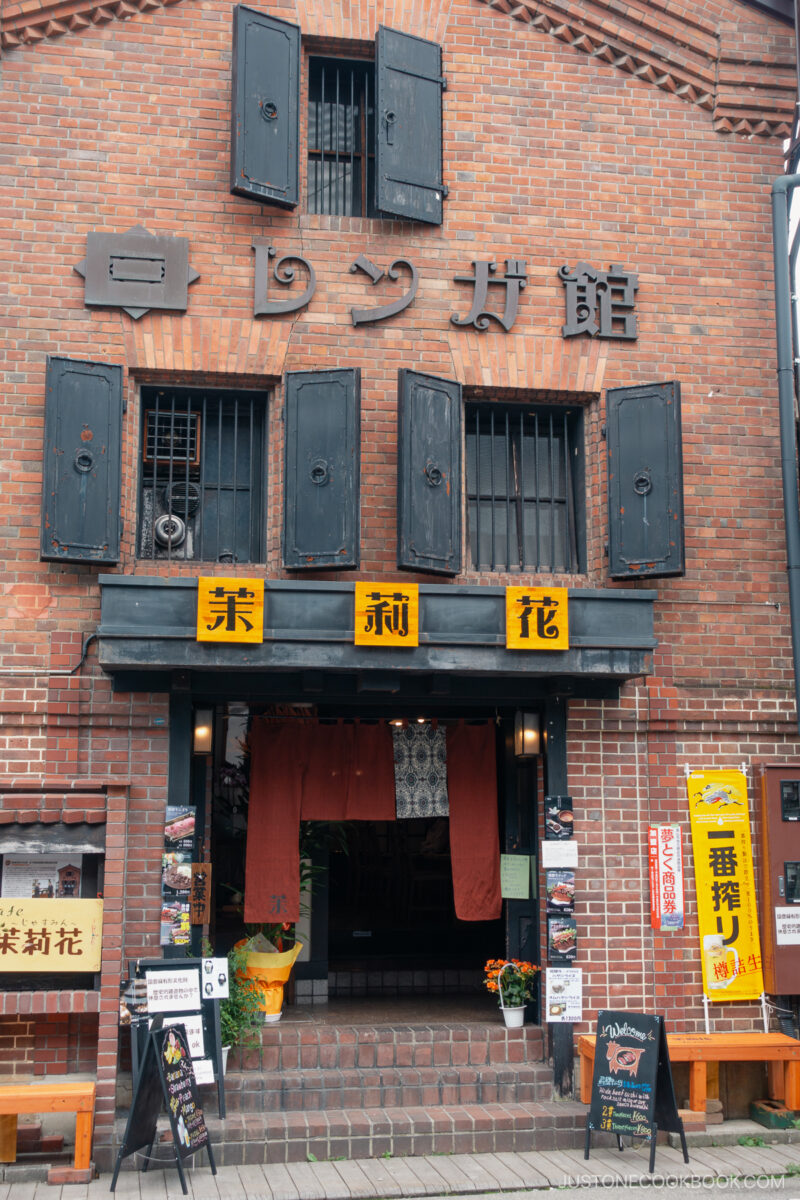
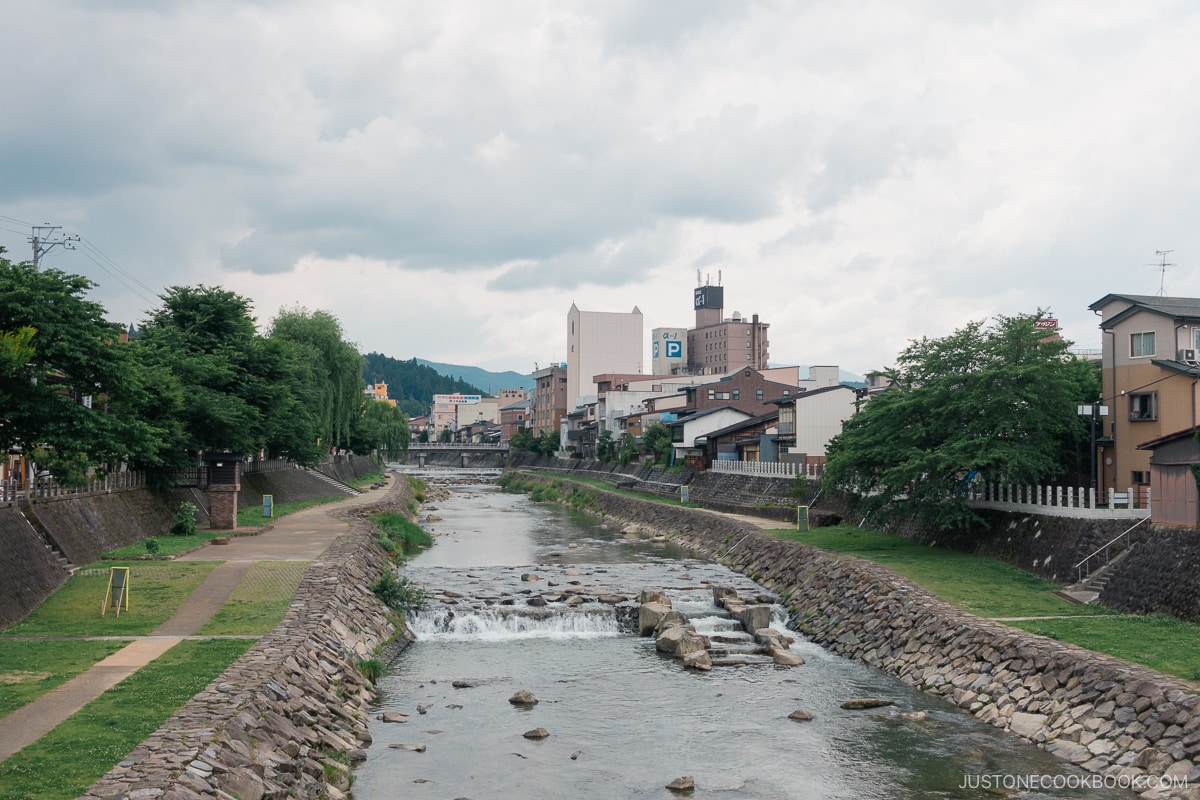

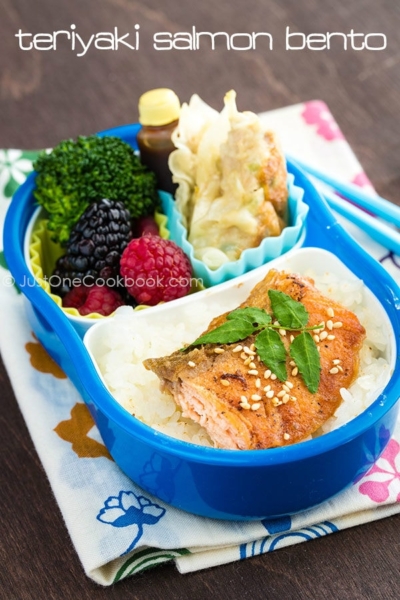

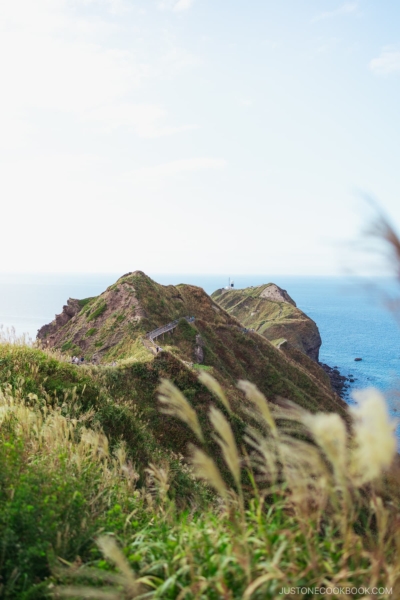
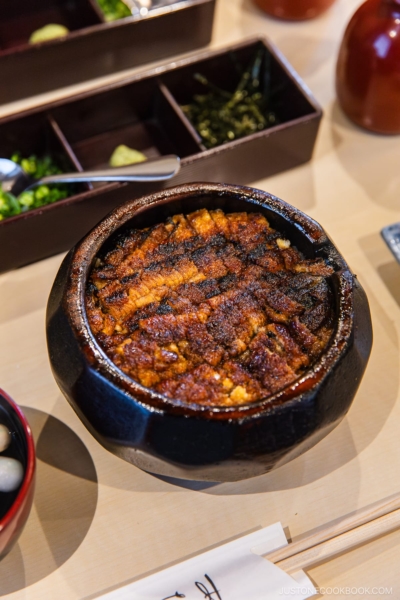




It is such a beautiful place, i love the small street and the Historical buildings, the food and the beautiful nature, i wish to travel to Japan some day, I’m saving some money , it is one of my dream,thank you so much for sharing all this
Amazing places with us❤❤
Hello there, Magaly! Thank you so much for taking the time to read Nami’s post and for your feedback.
We hope your dream will come true soon too.
will be visiting Takayama in May 2019 and your write up about its attractions are very detailed and helpful. Thank you.
How wonderful! I hope you enjoy your trip in Takayama! Enjoy Hida beef and Hoba Miso (https://www.justonecookbook.com/hoba-miso-with-beef/). 🙂
I’ll be visiting Takayama and Kanazawa in a month’s time, so this is a wonderful introduction! Thank you so much for taking the time to write these 🙂 🙂
Hi Carina! How exciting! You’ll have a great time for sure! Have a safe trip and enjoy! 🙂
Very interesting tour of Takayama! Love the buildings and the interiors are so pristine, uncluttered and simple. Not like the interior of office buildings in the U.S. 🙂 Thanks for all of the lovely pictures and great tour!
I have just also read the first part of your visit and am enchanted. What a change from Tokyo, the only place I know in Japan! I would love to discover once a Japanese city where I can walk everywhere. Great touristic post, as always !
Your kids certainly look thrilled with those swords! What an impressive tour. Everything from instruments of torture to beautiful cherries. You certainly are an excellent tour guide, Nami xx
So many beautiful pictures Nami, thank you!
So quaint and beautiful!
Cheers,
Rosa
Really a delightful post. Such a fun read! And wonderful pictures. Thanks.
Thank you so much for sharing these pictures. I visited Takayama a while back now and it was one of my favorite spots as well. I just loved the old charm it had. I also highly recommend it to any visitors. Thanks again!
Hi Janice! I’m so happy to hear you enjoyed your trip to Takayama as well! This old town is different from Kyoto, which is a big scale of old city… Thank you so much for recommending this place to JOC readers! 🙂
This looks so lovely. I am so obsessed with Japan!
I hope you had a lovely time with your family 🙂
Hi Georgina! Thank you, we did! I’m happy to hear you enjoy Japan and Japanese culture. We’re honored to hear that. 🙂
Oh Nami – have to go and walk those places again. I always feel so full of peace amongst old Japanese buildings. I do not know whether it is the brown timber softly contrasted with the beautiful simple greenery . . . or perhaps the architectural shapes just enrich the artist in me 🙂 ? Even the 7-11 must have the nicest frontage I have ever seen!!!Am glad your kids are learning a little every year: and there goes your lovely daughter with her model posture putting a big smile on my face!! And that kitchen will be finished one day . . . patience.
Hi Eha! Isn’t the 7-11 looks so cool? I just had to take that picture, and I’m glad it caught your attention! 🙂 Hee hee, my daughter is always doing that pose! Thanks so much for your sweet encouragement on the kitchen remodel. I’ll hang in there! 🙂
I love Takayama, I was there in Winter, so cold but so pretty! Good to see it in Summer, thank you for sharing!
Hi Alessandra! Oh it must be so cold to be in winter, but at the same time, Takayama in snow must be so pretty! 🙂 Thank you for reading!